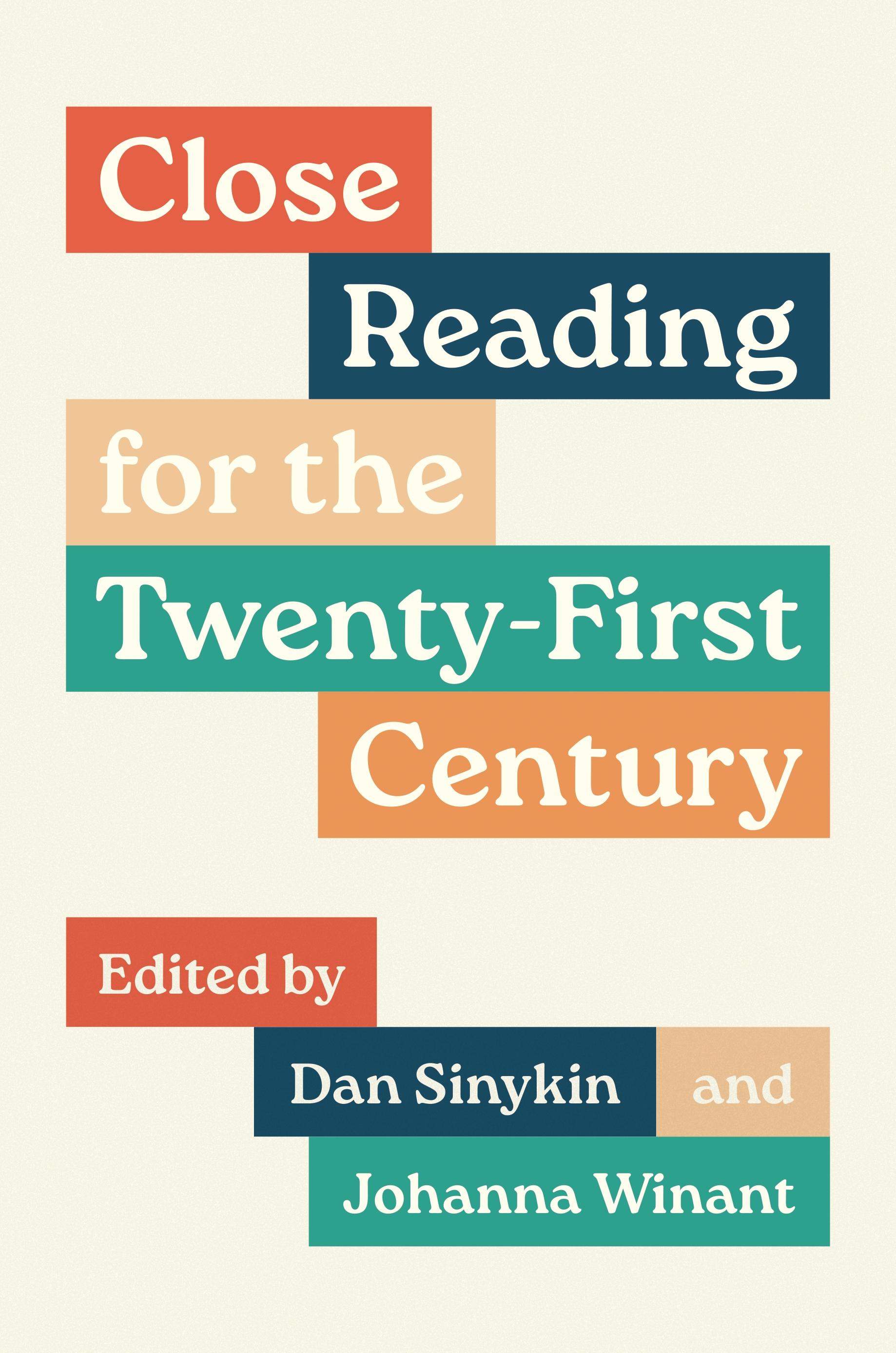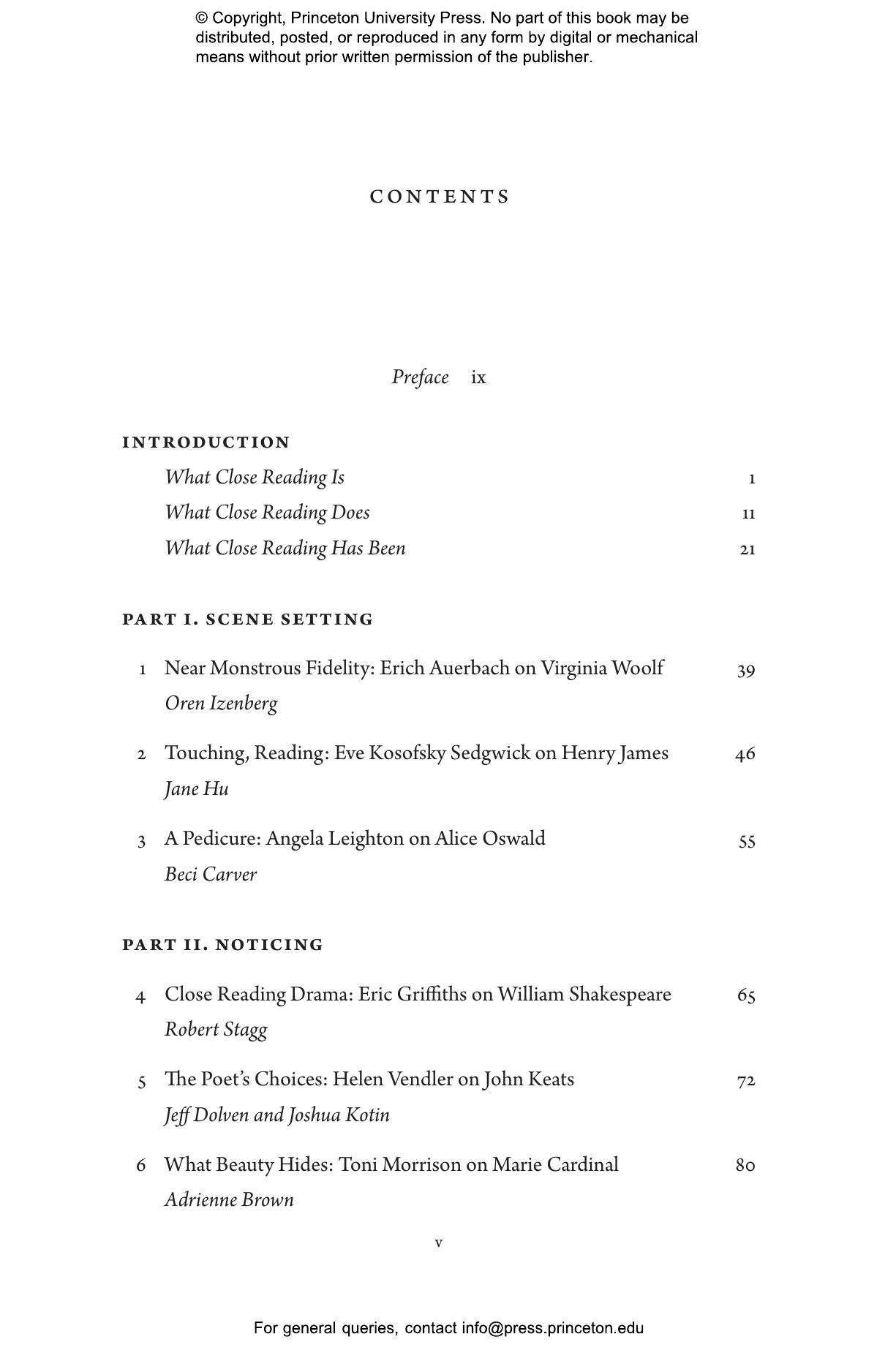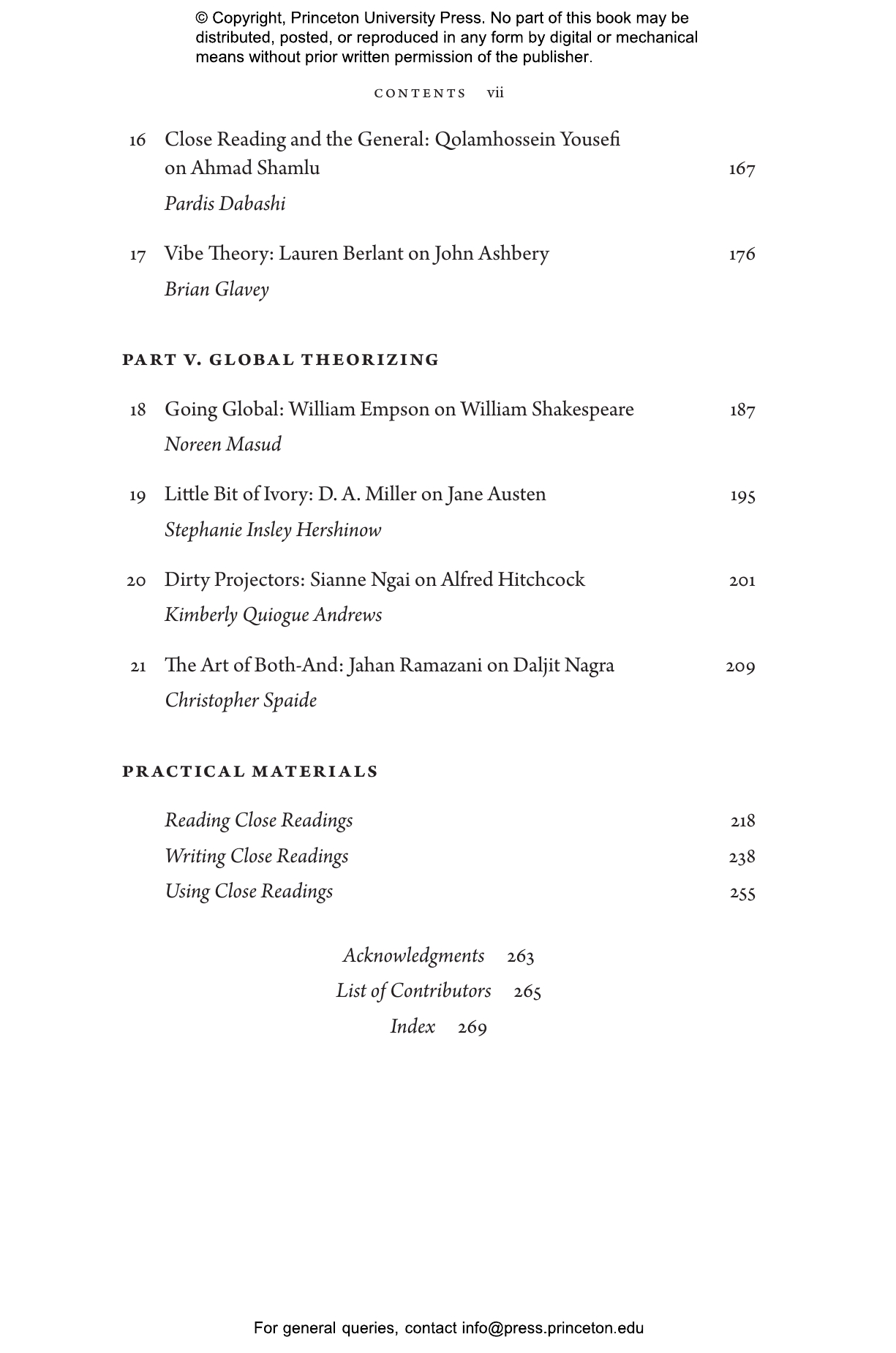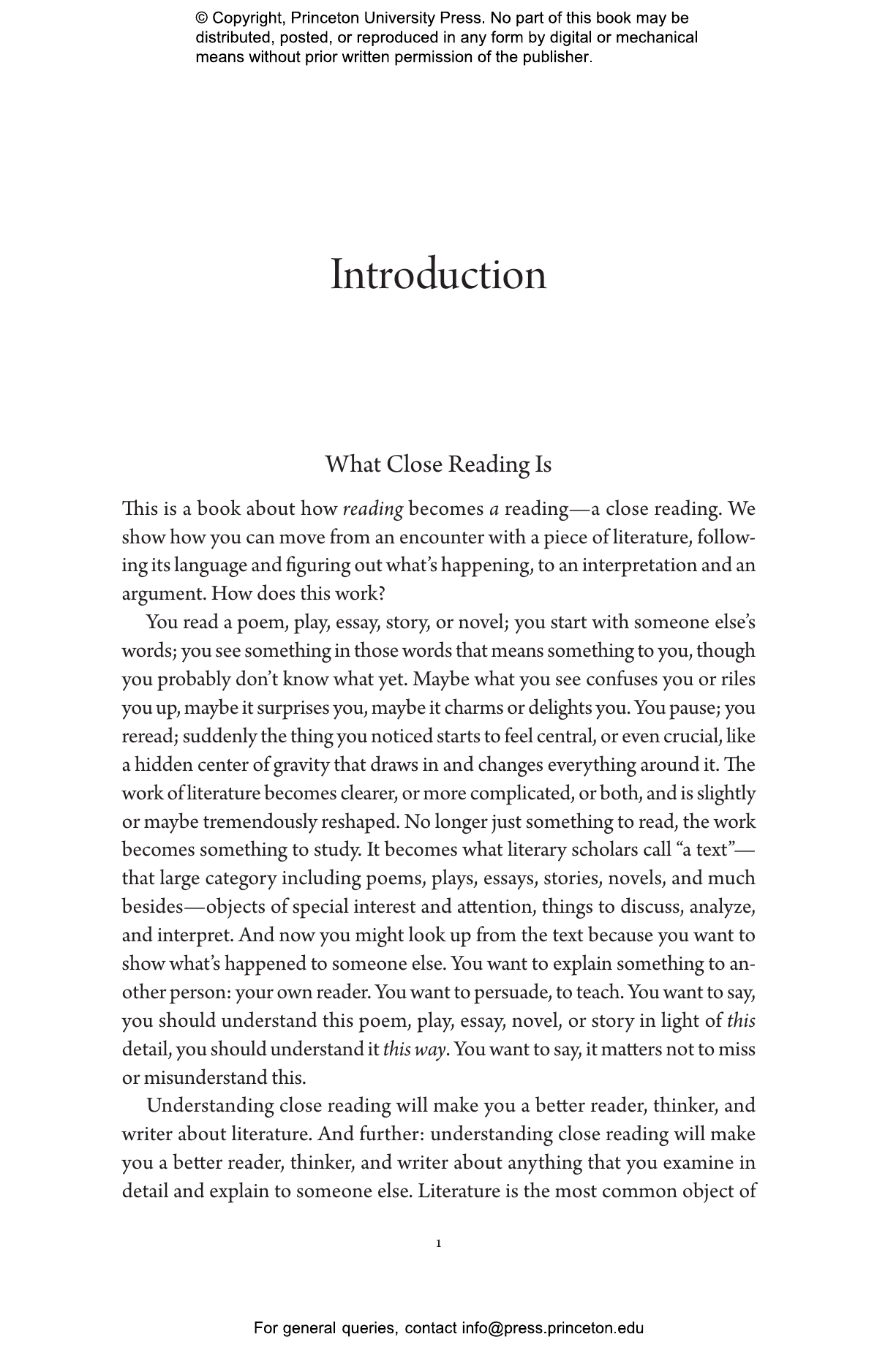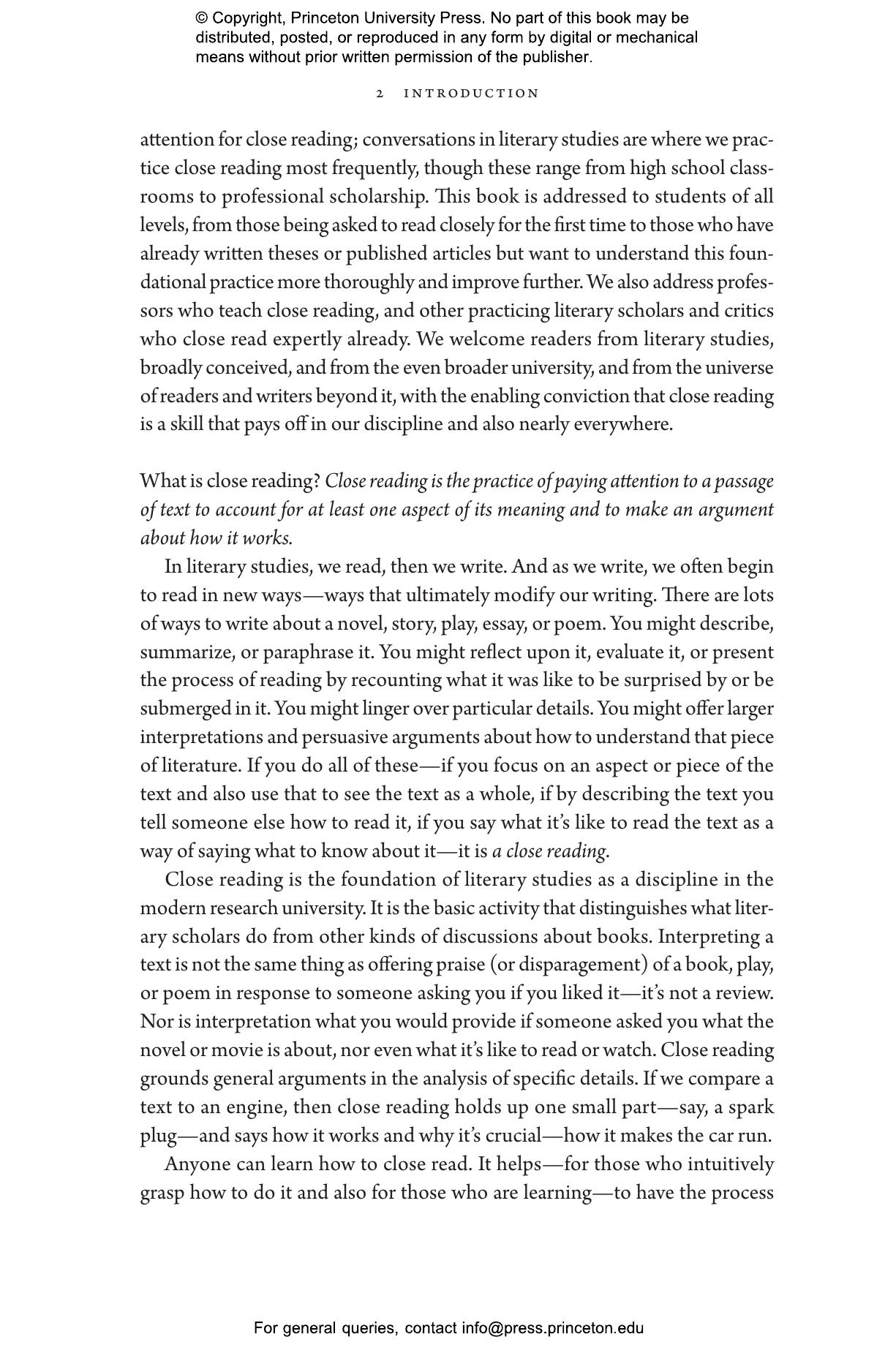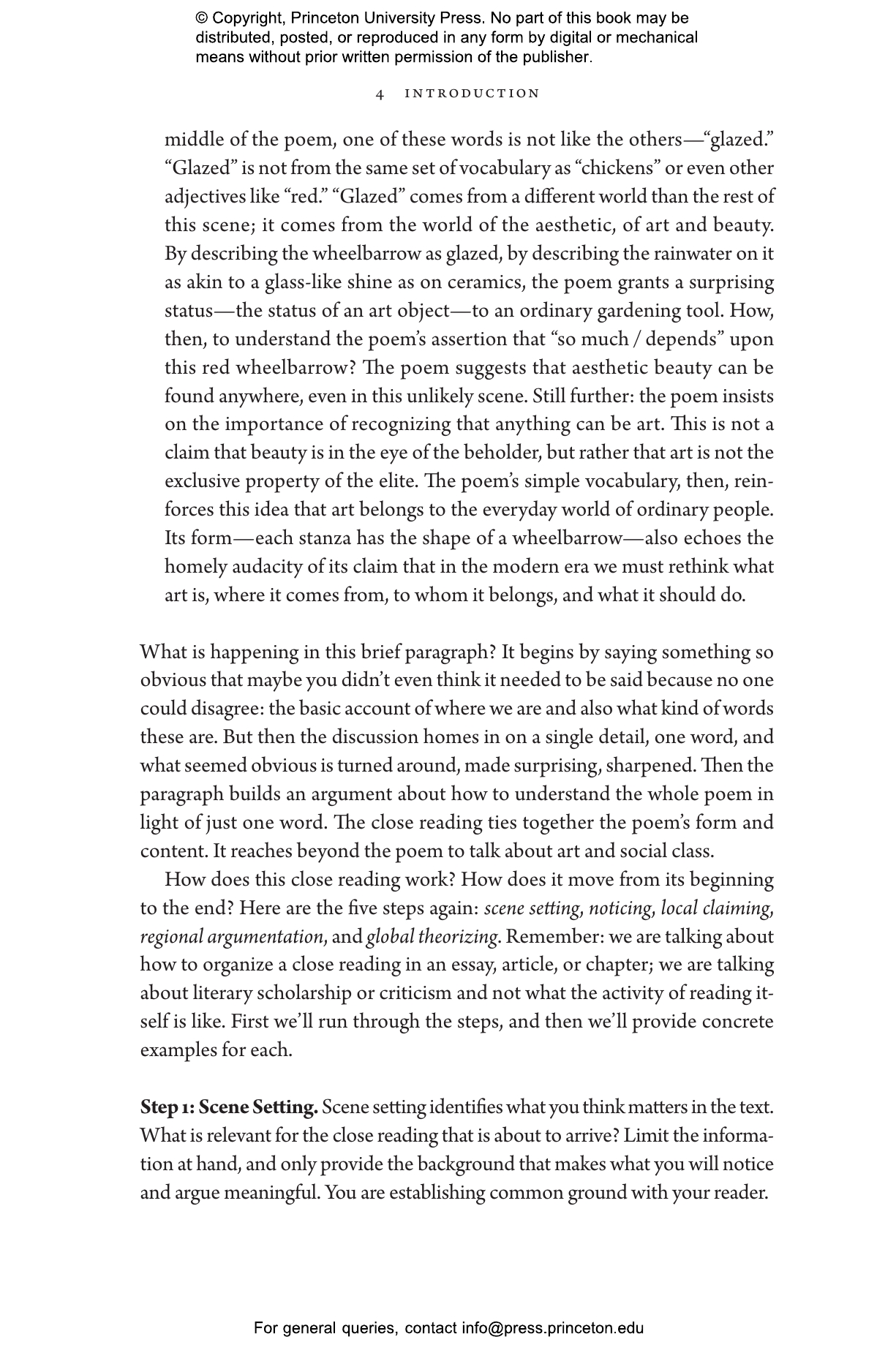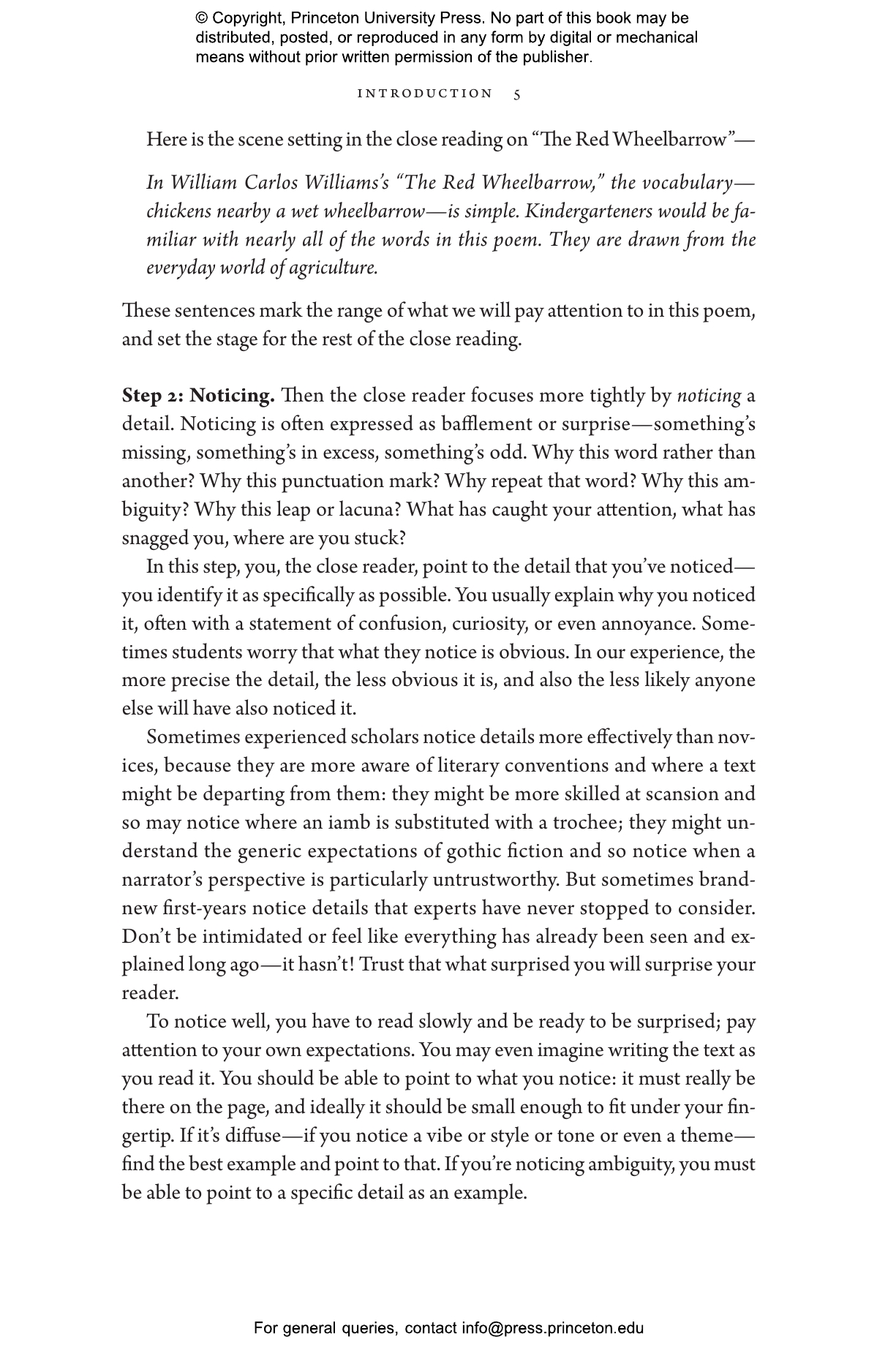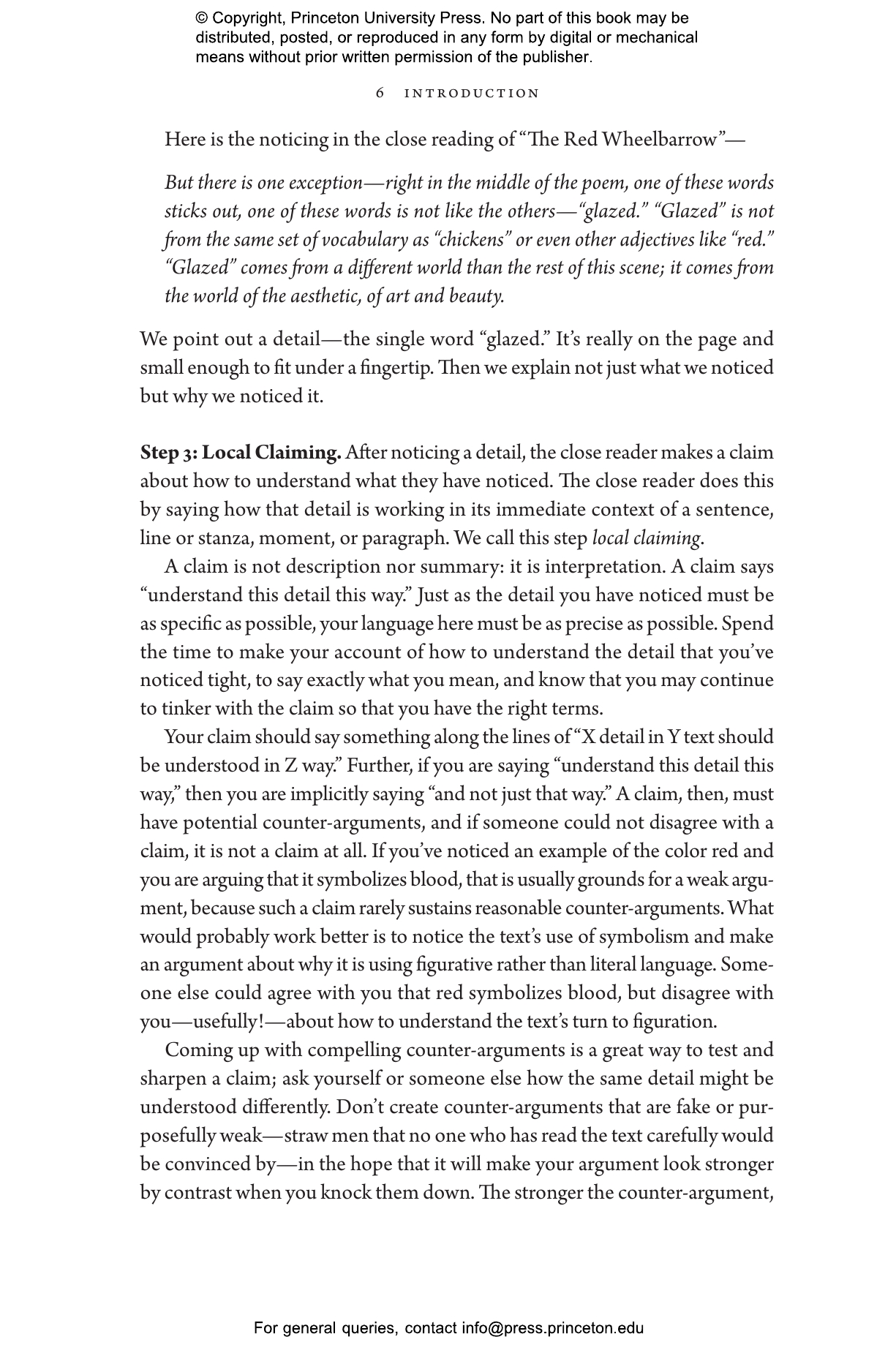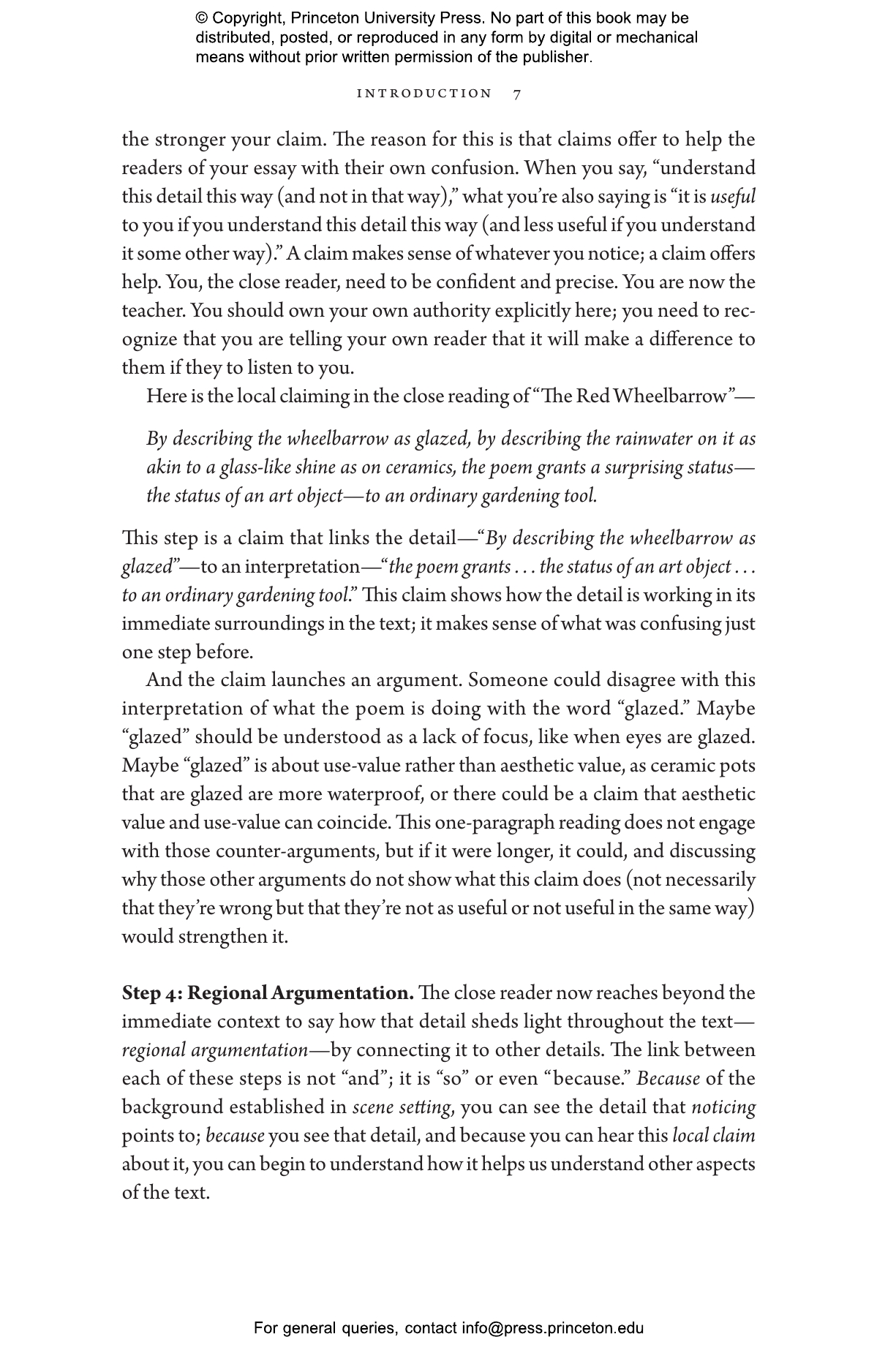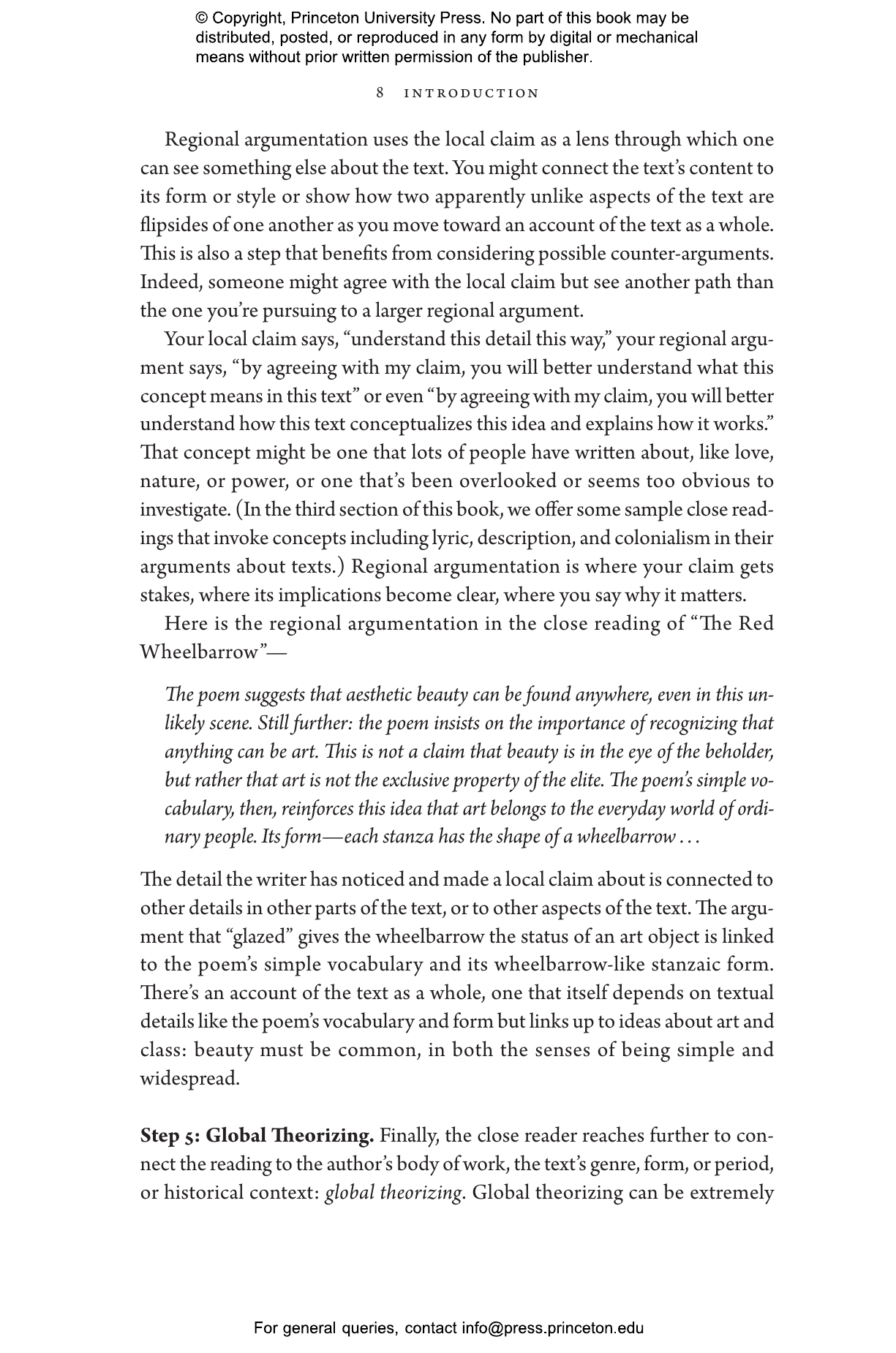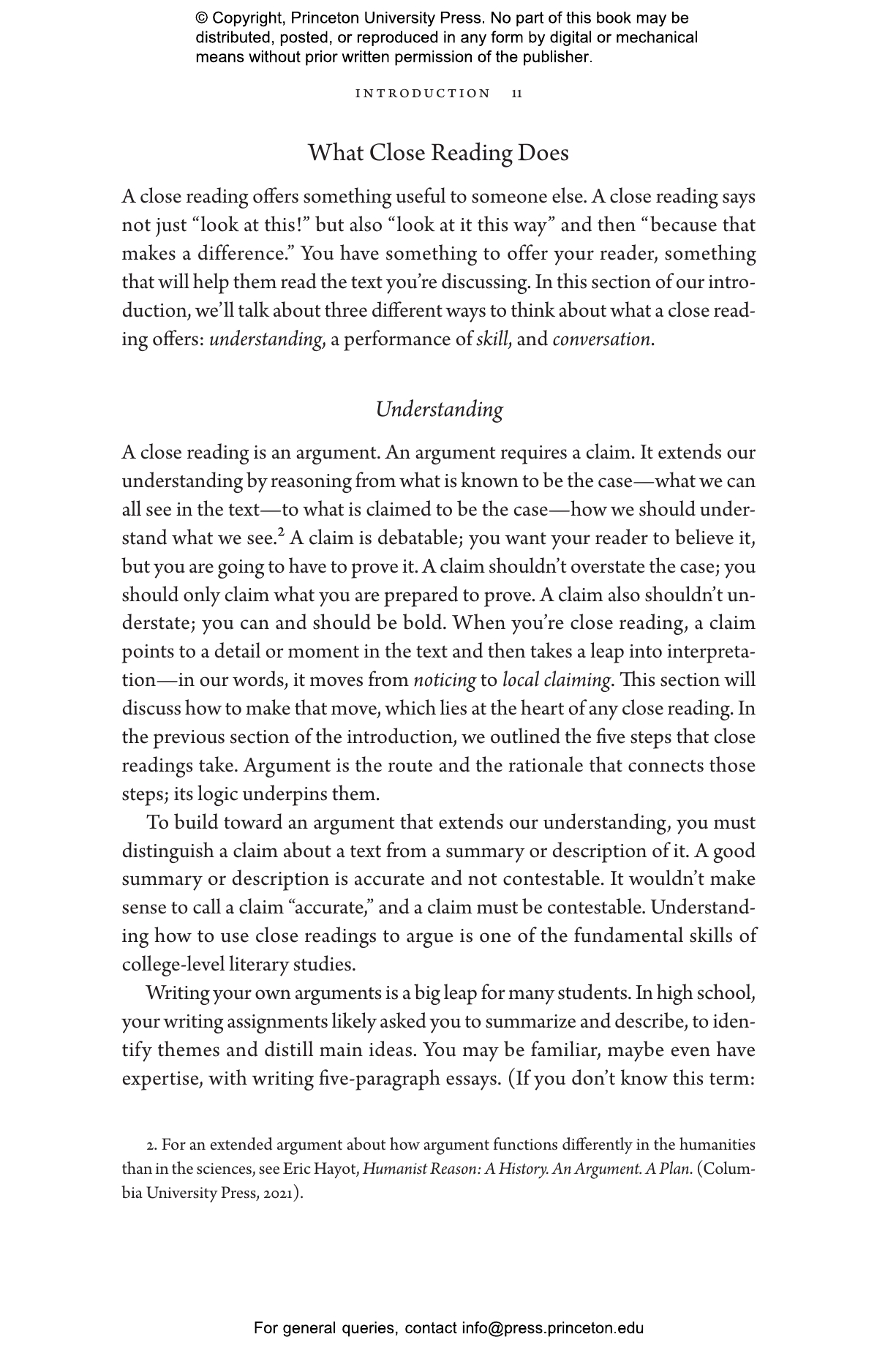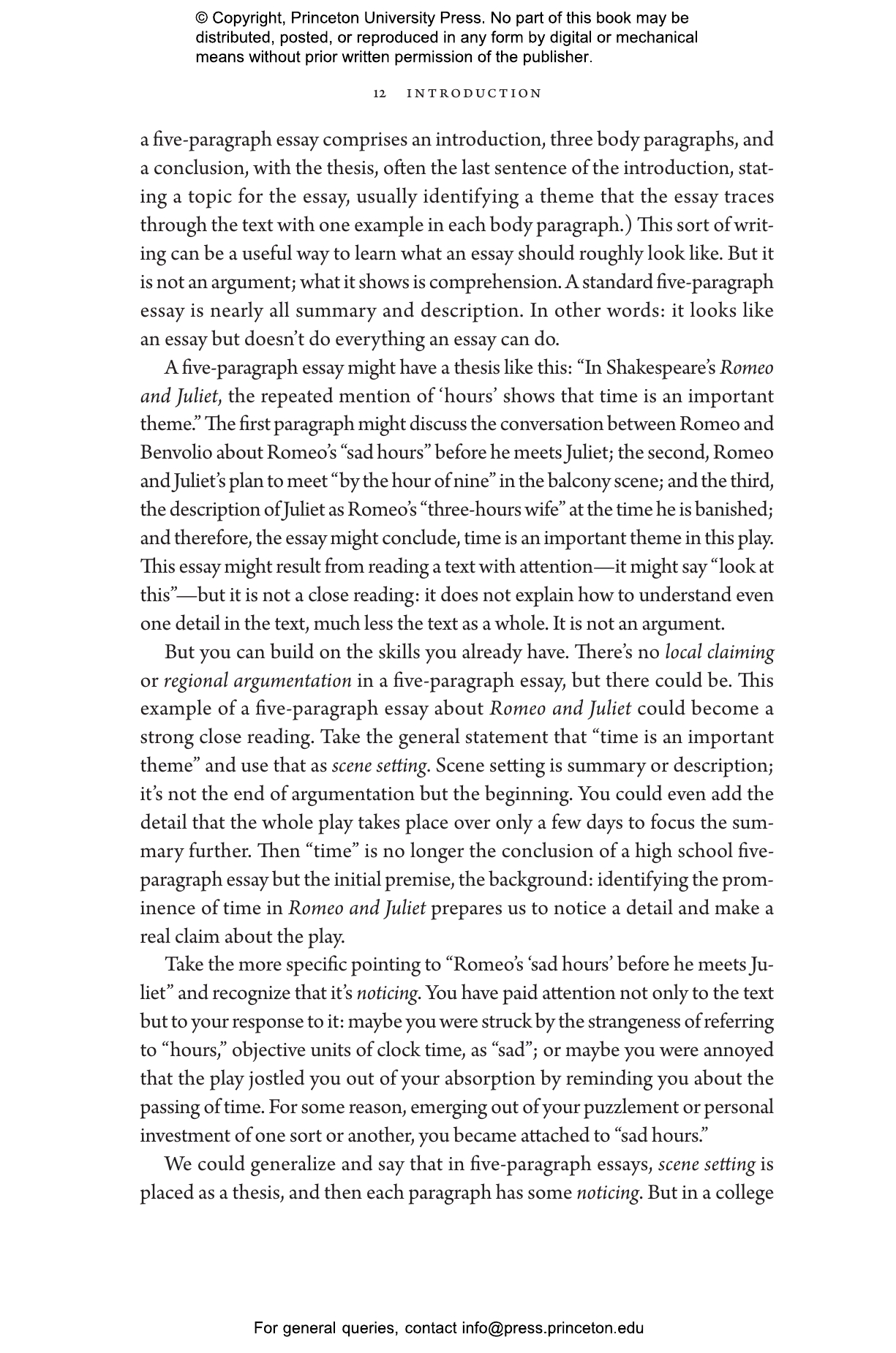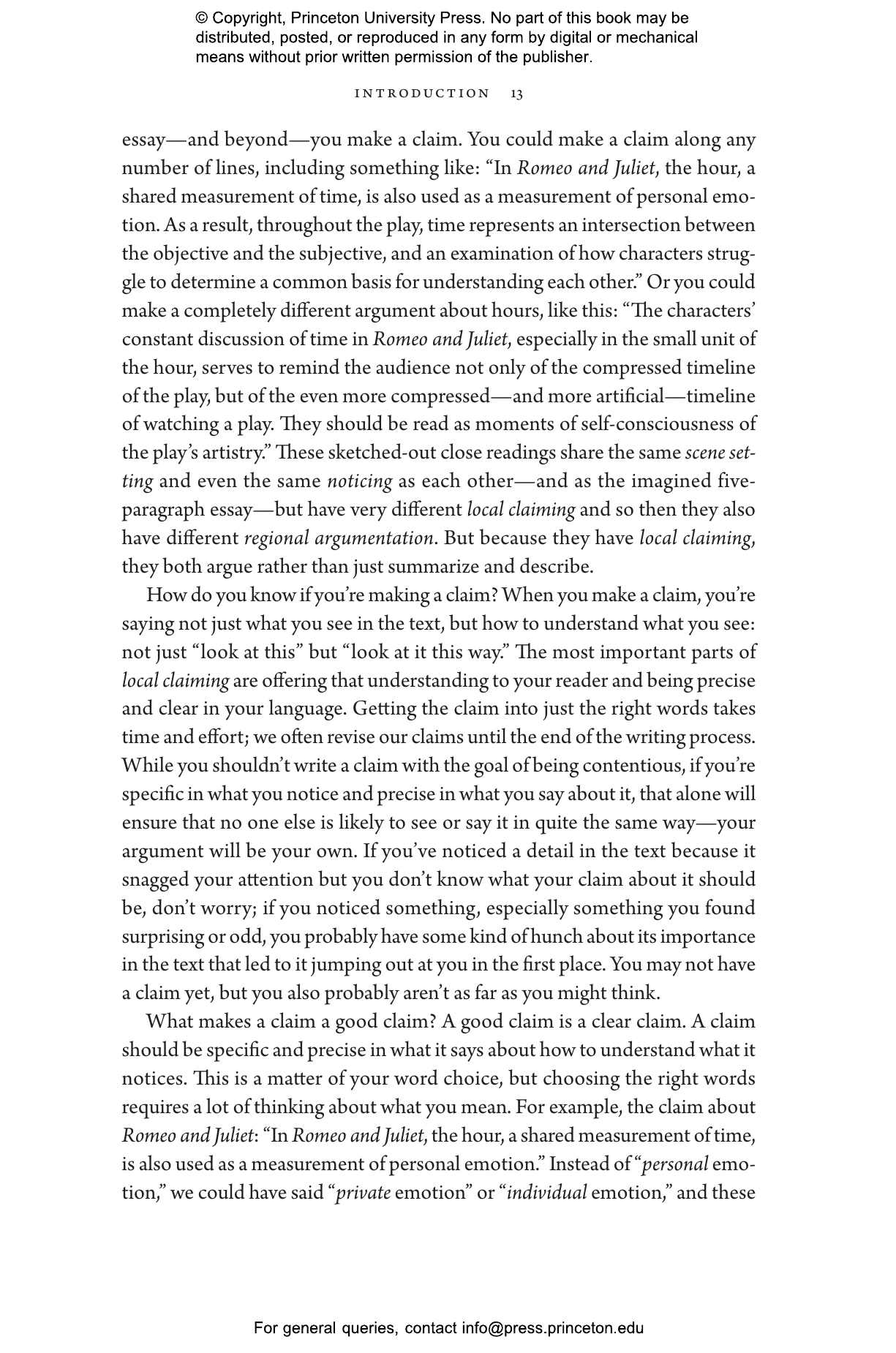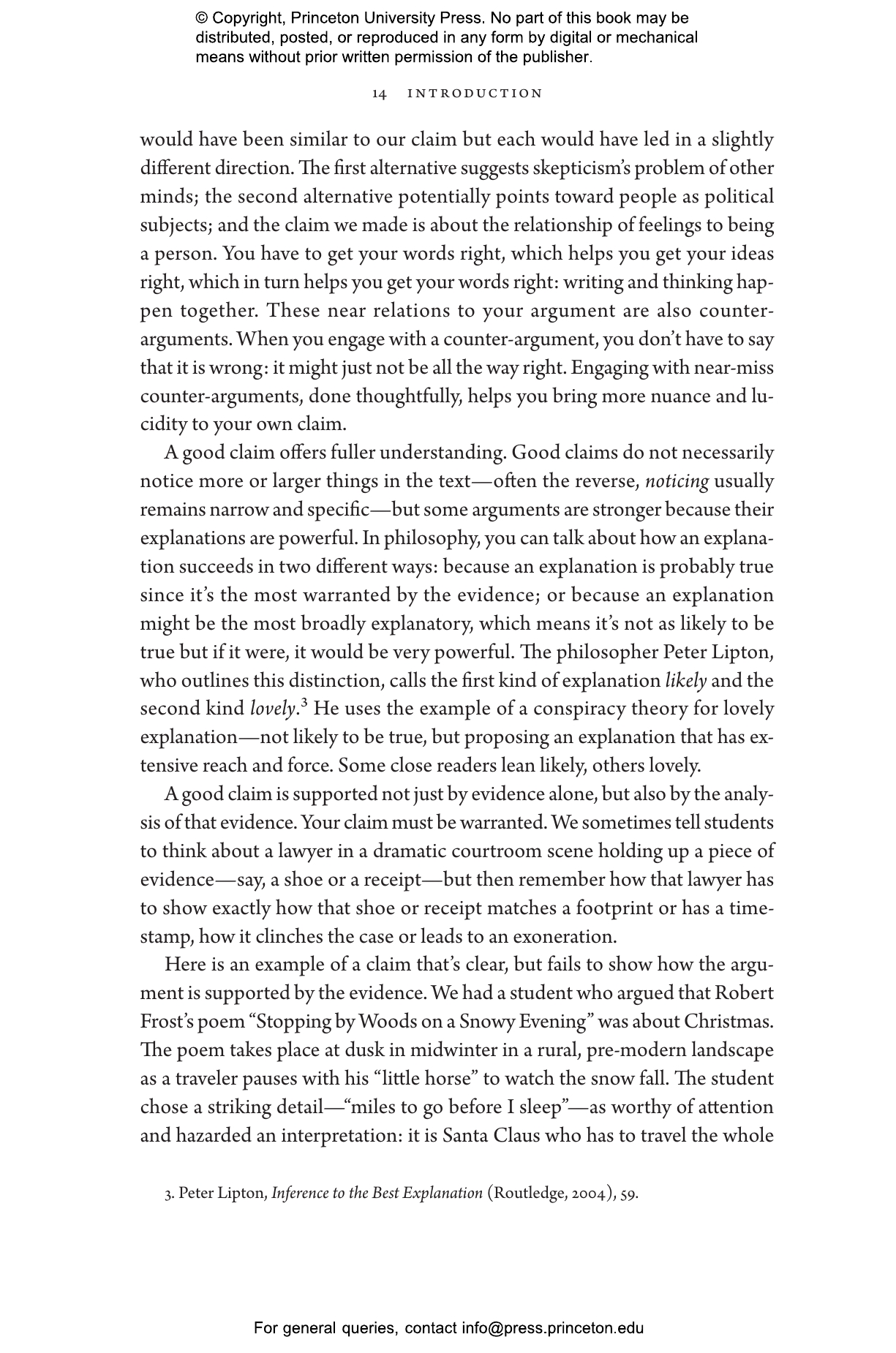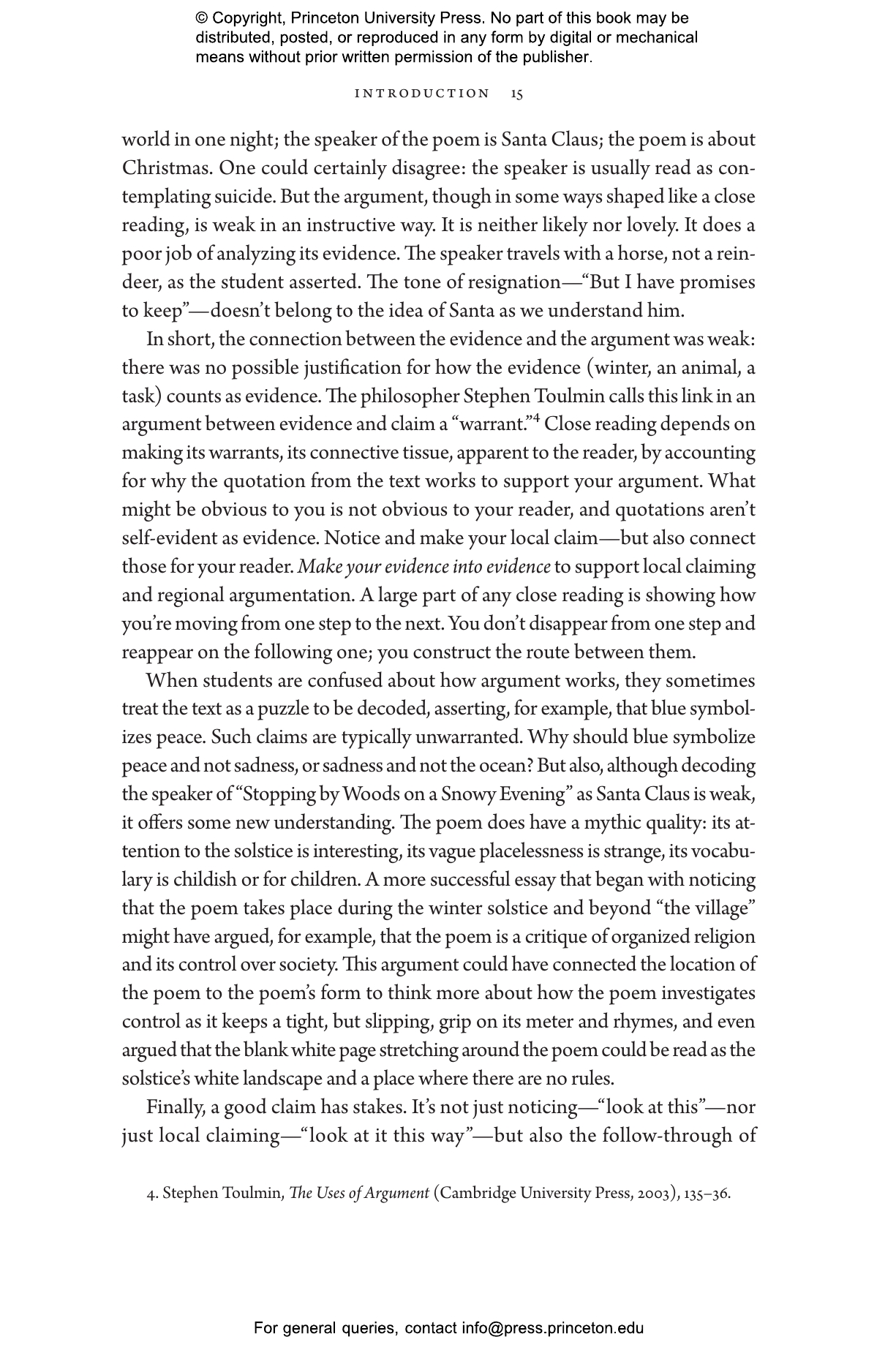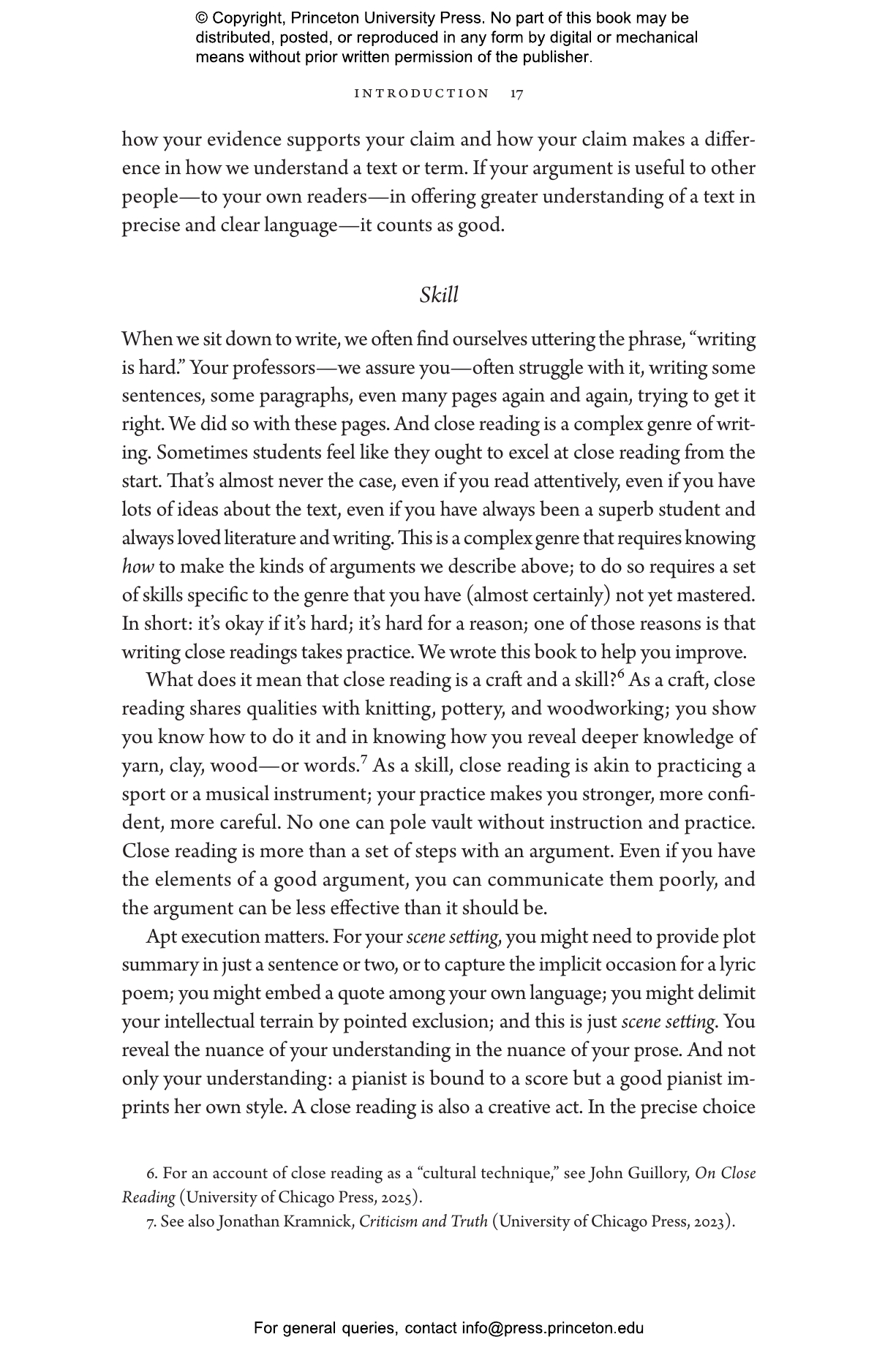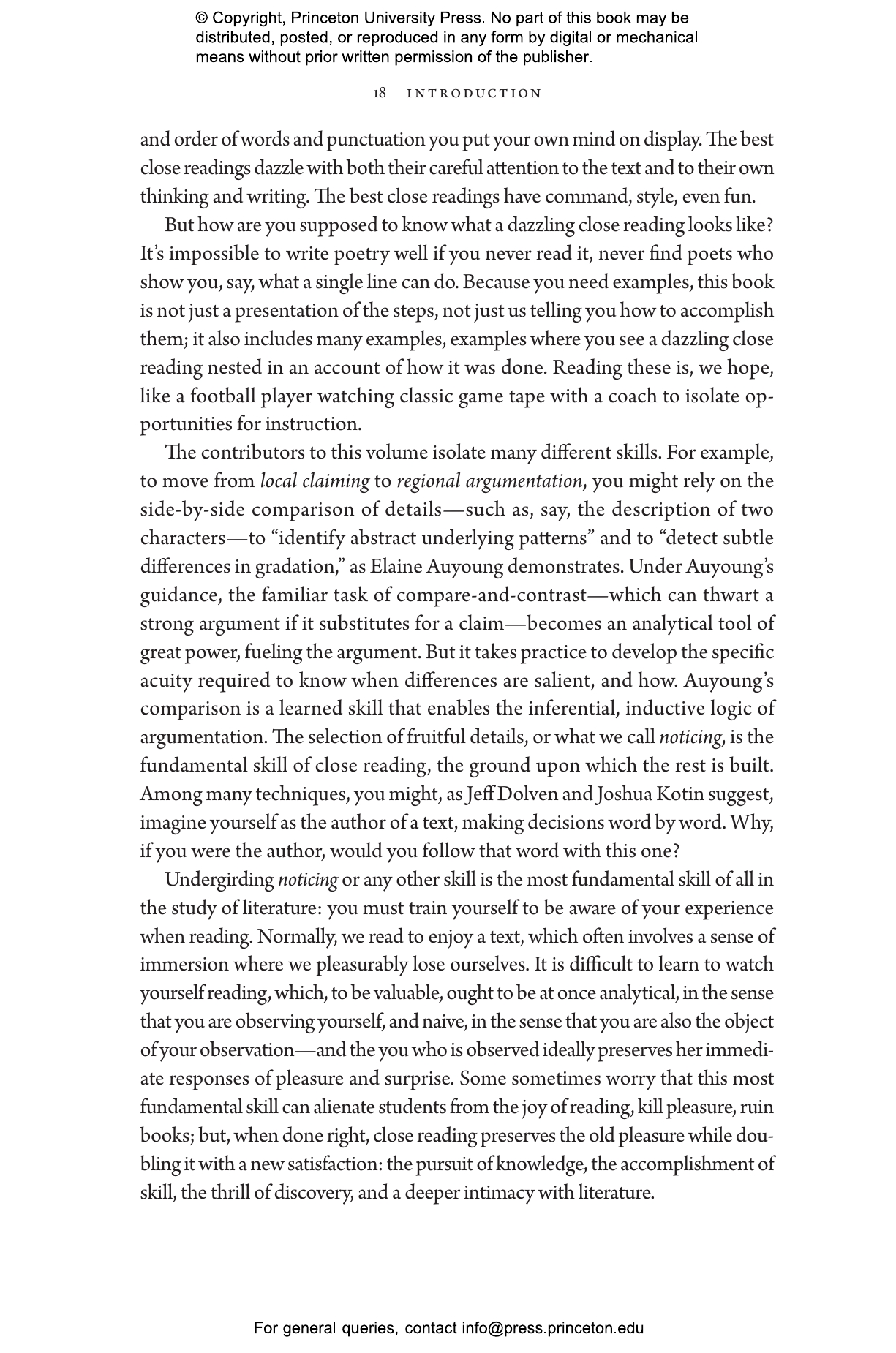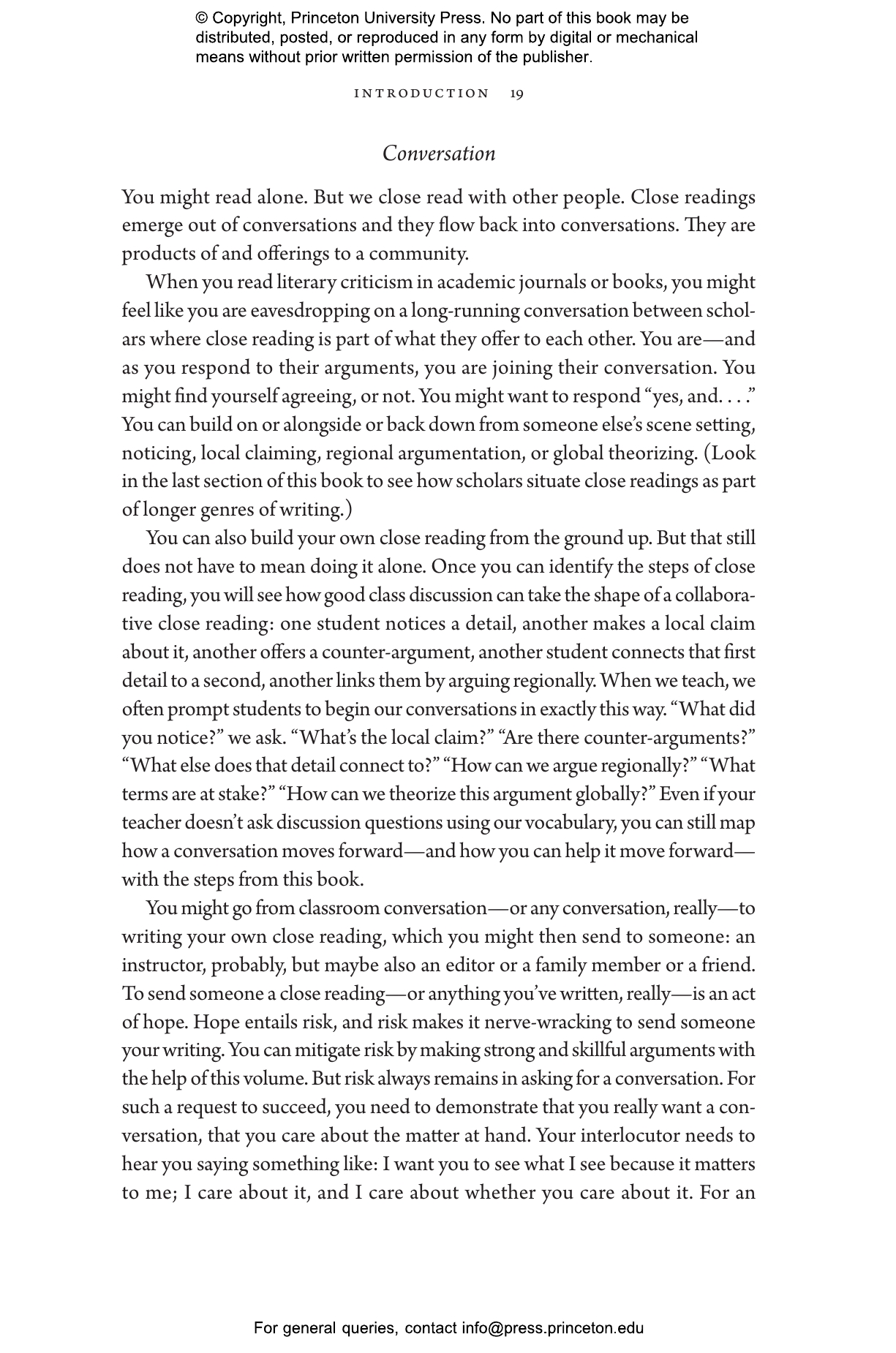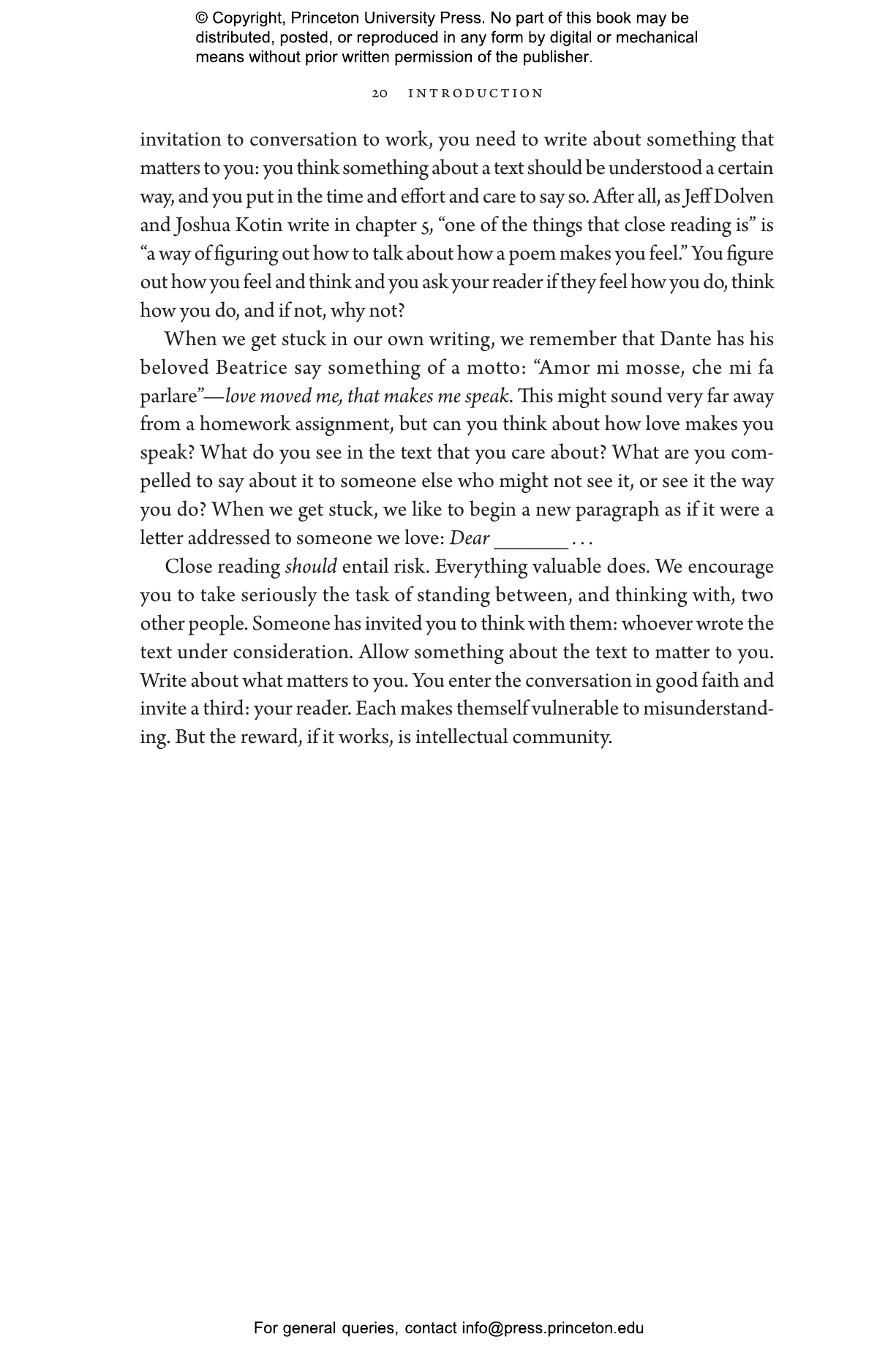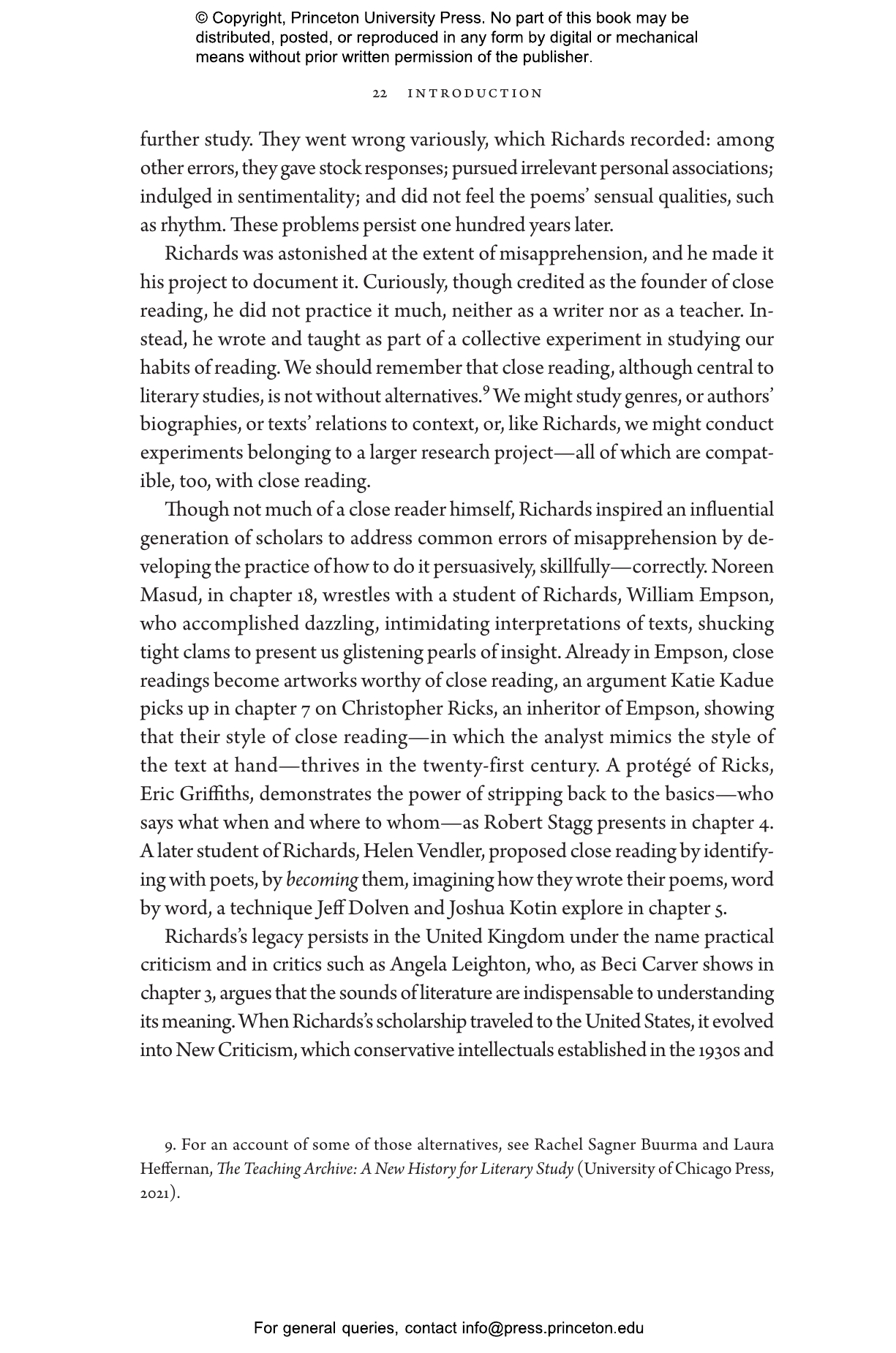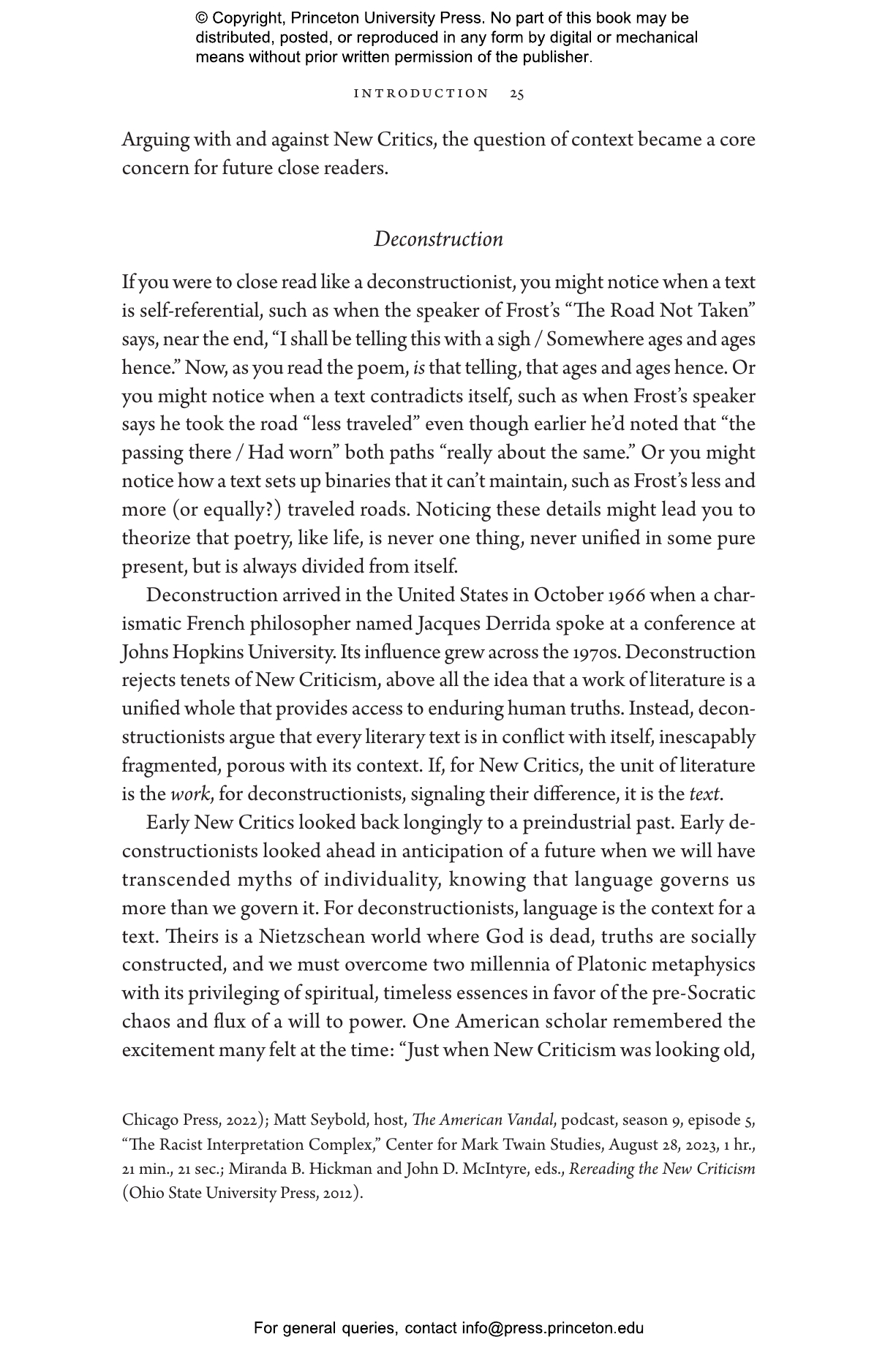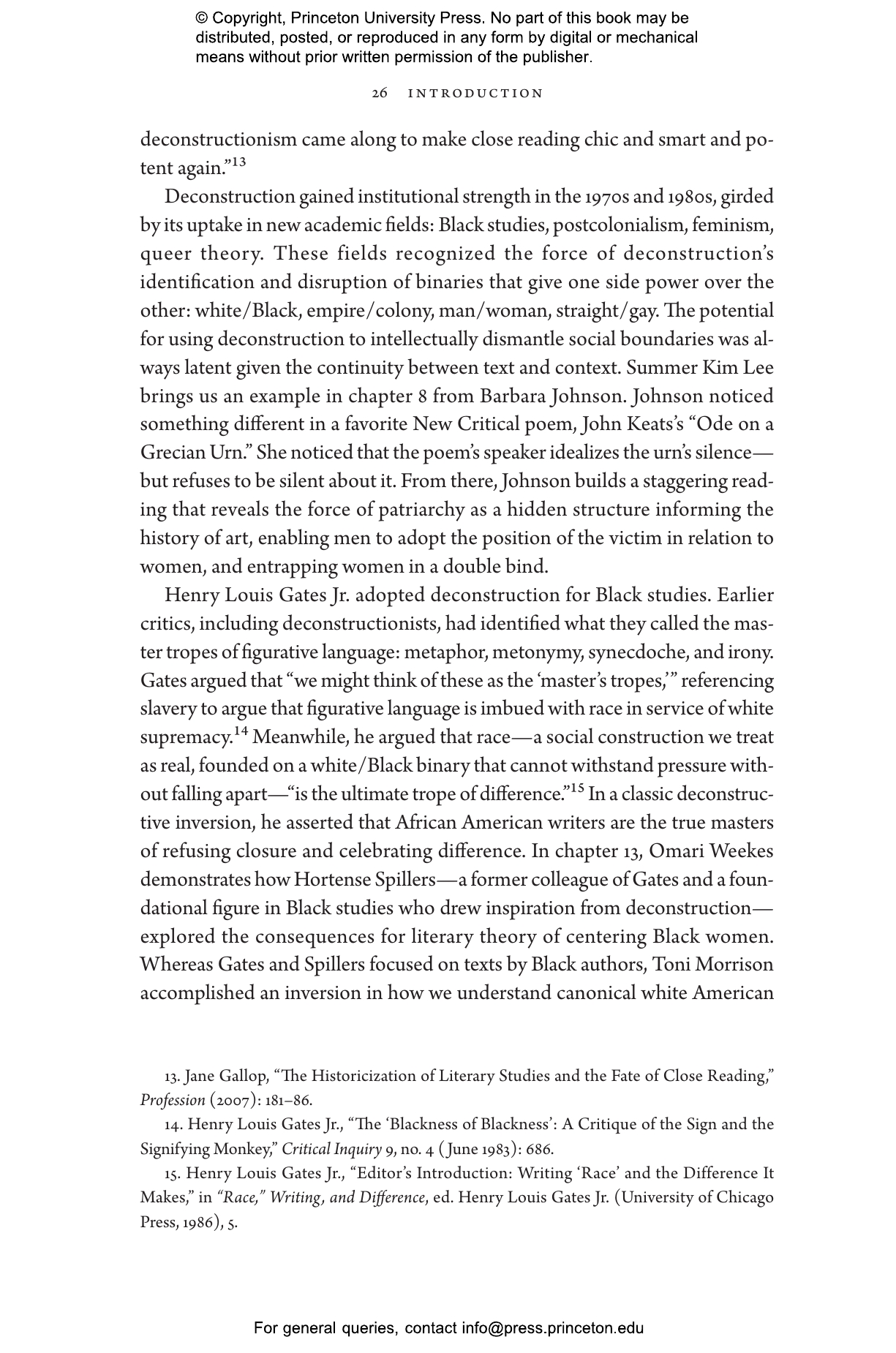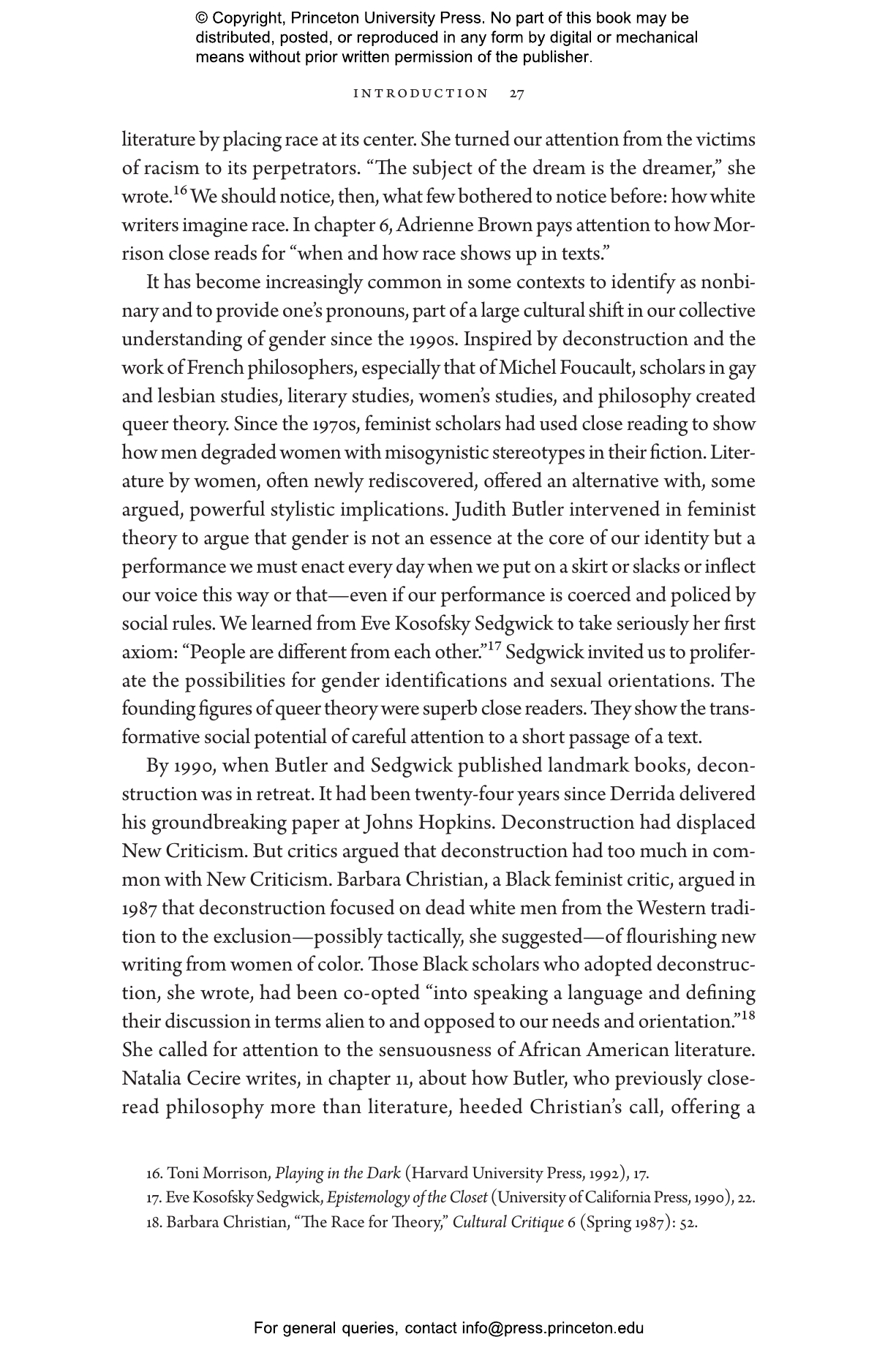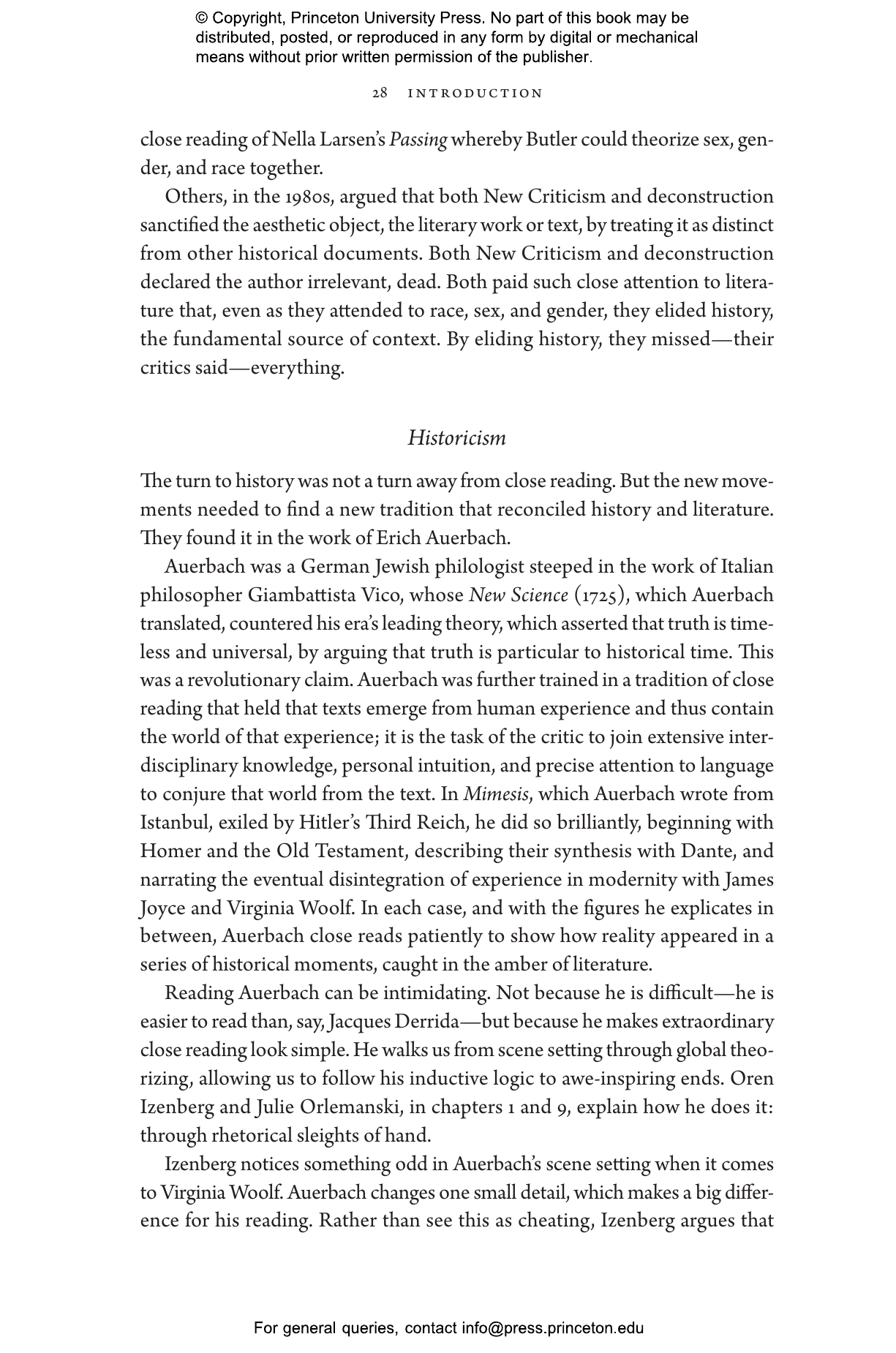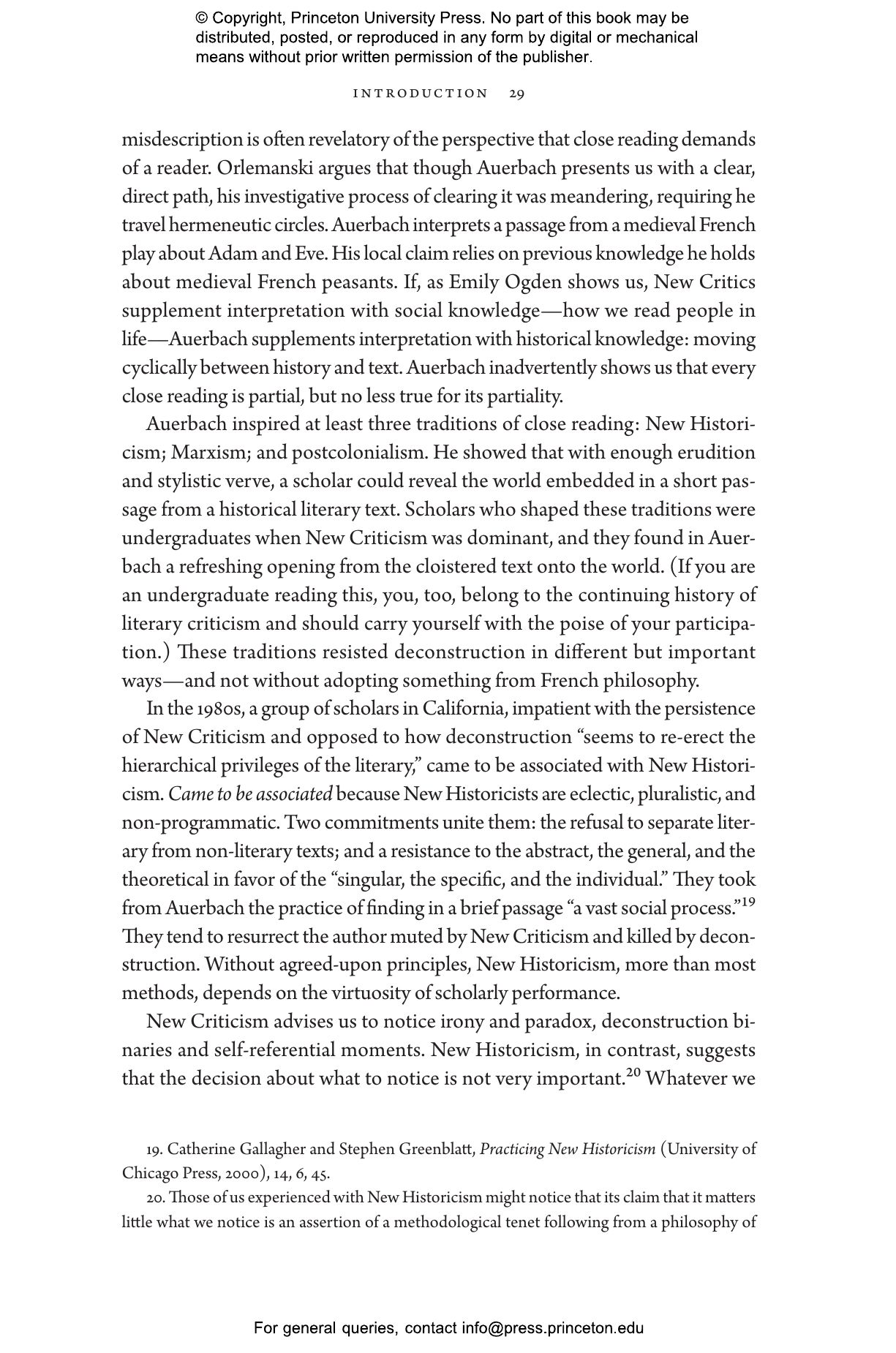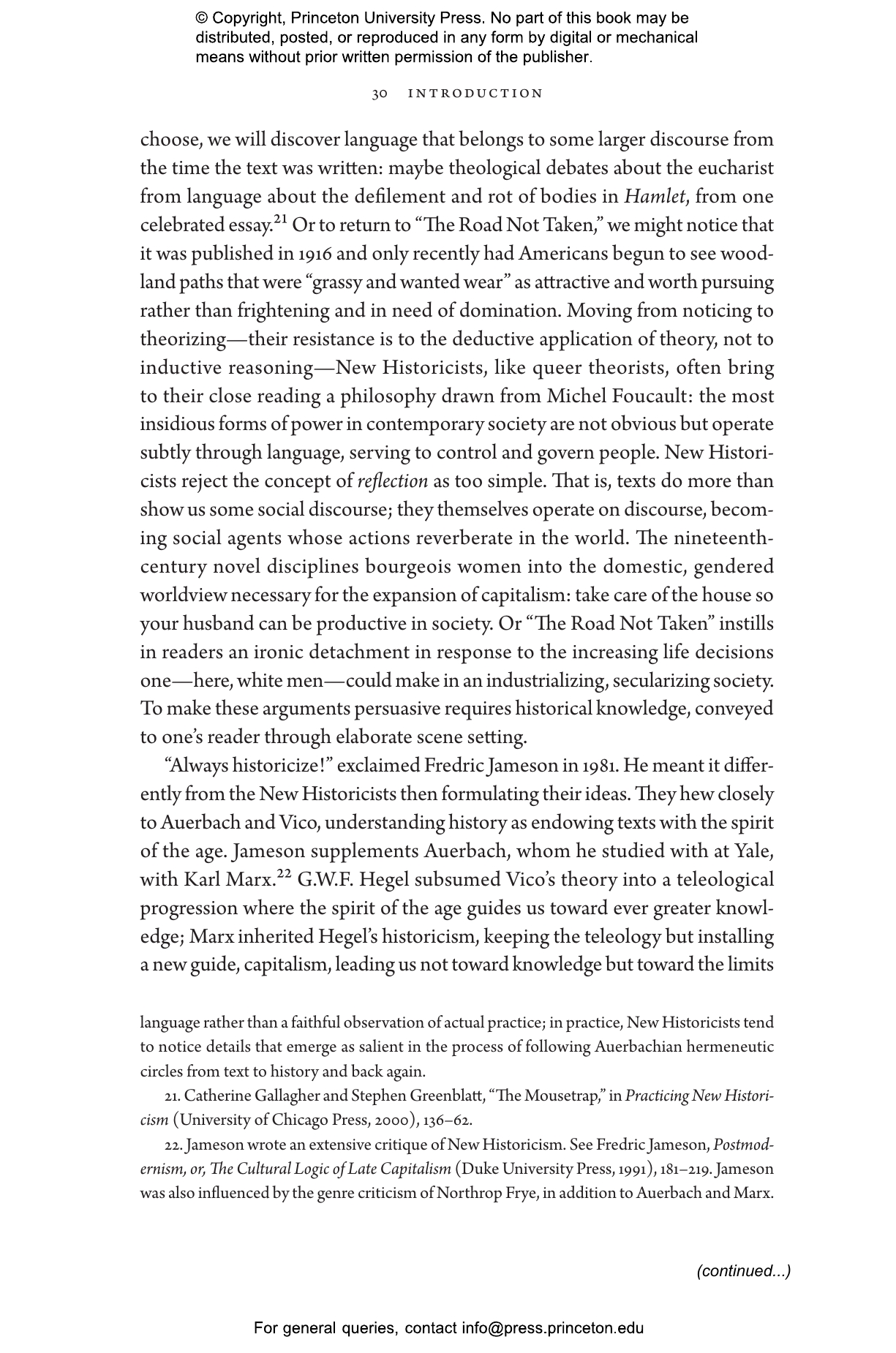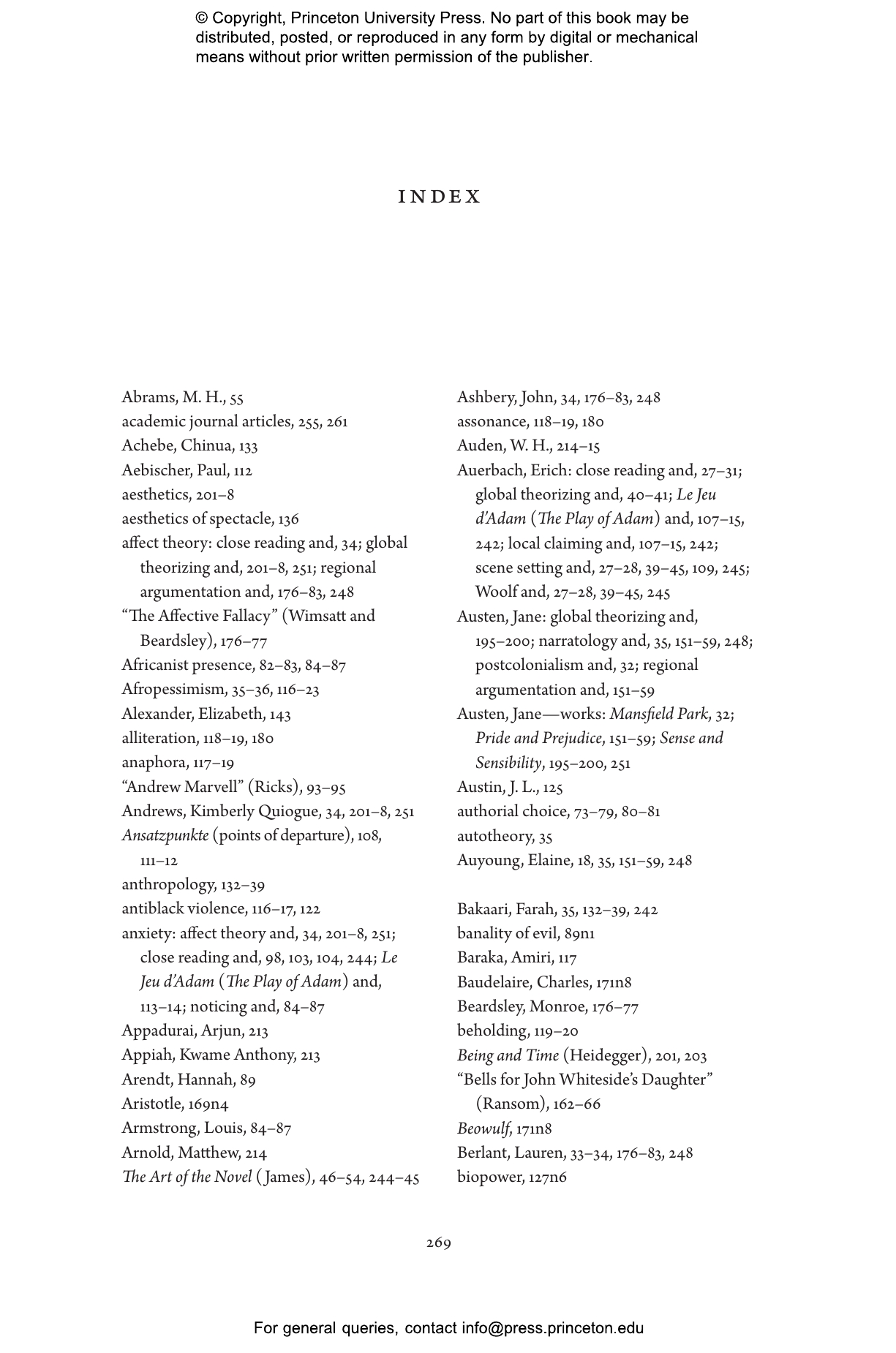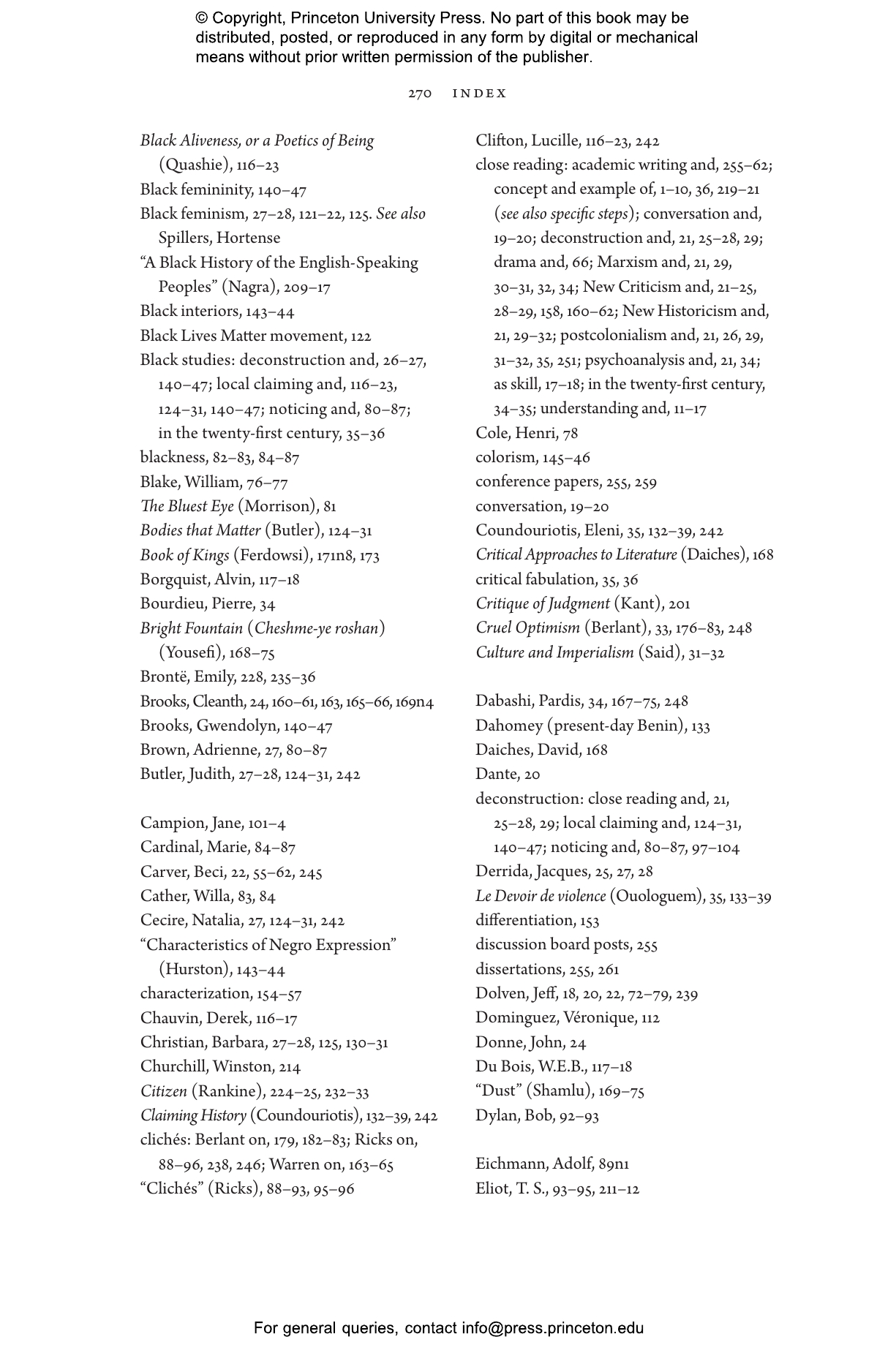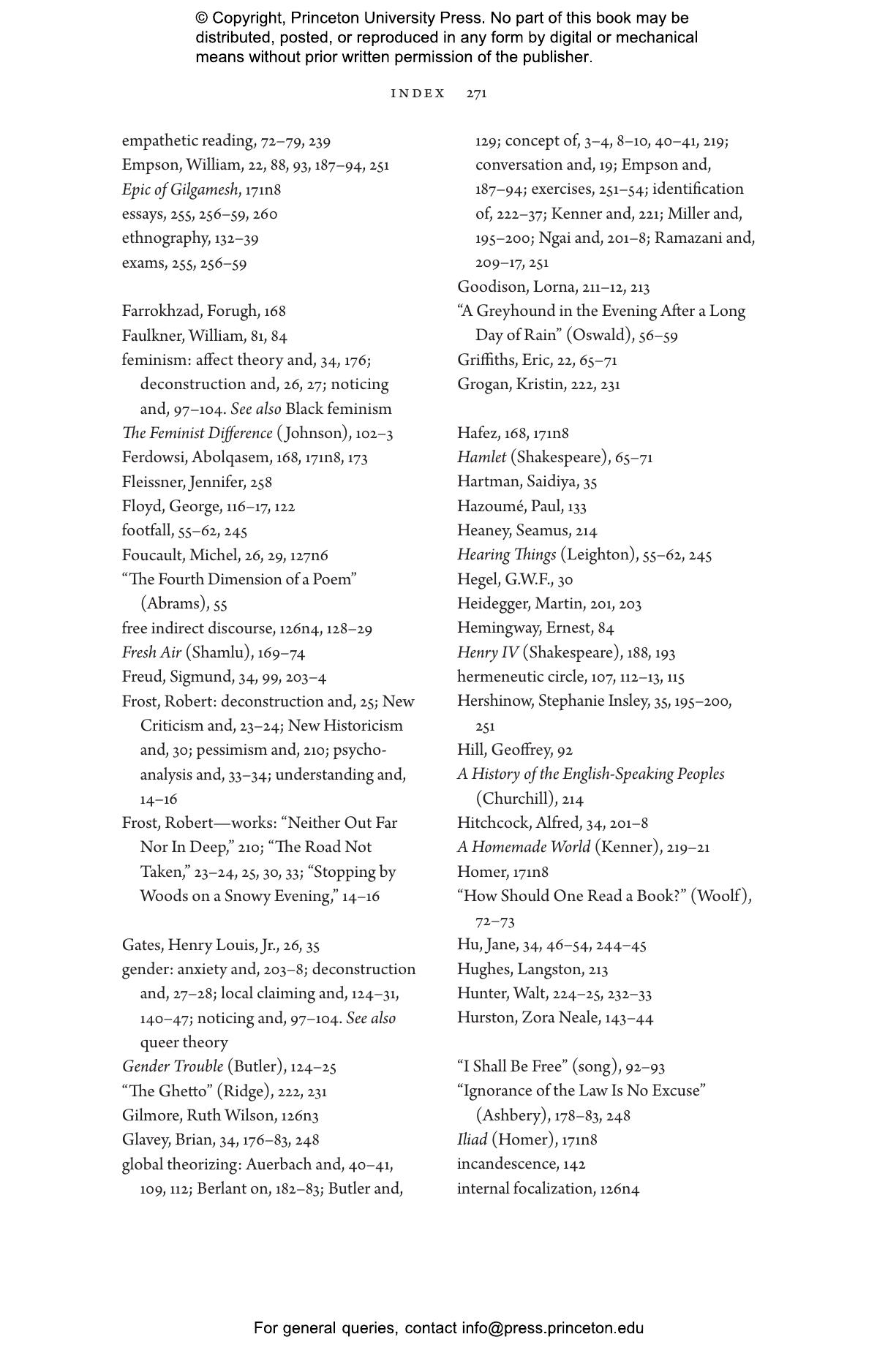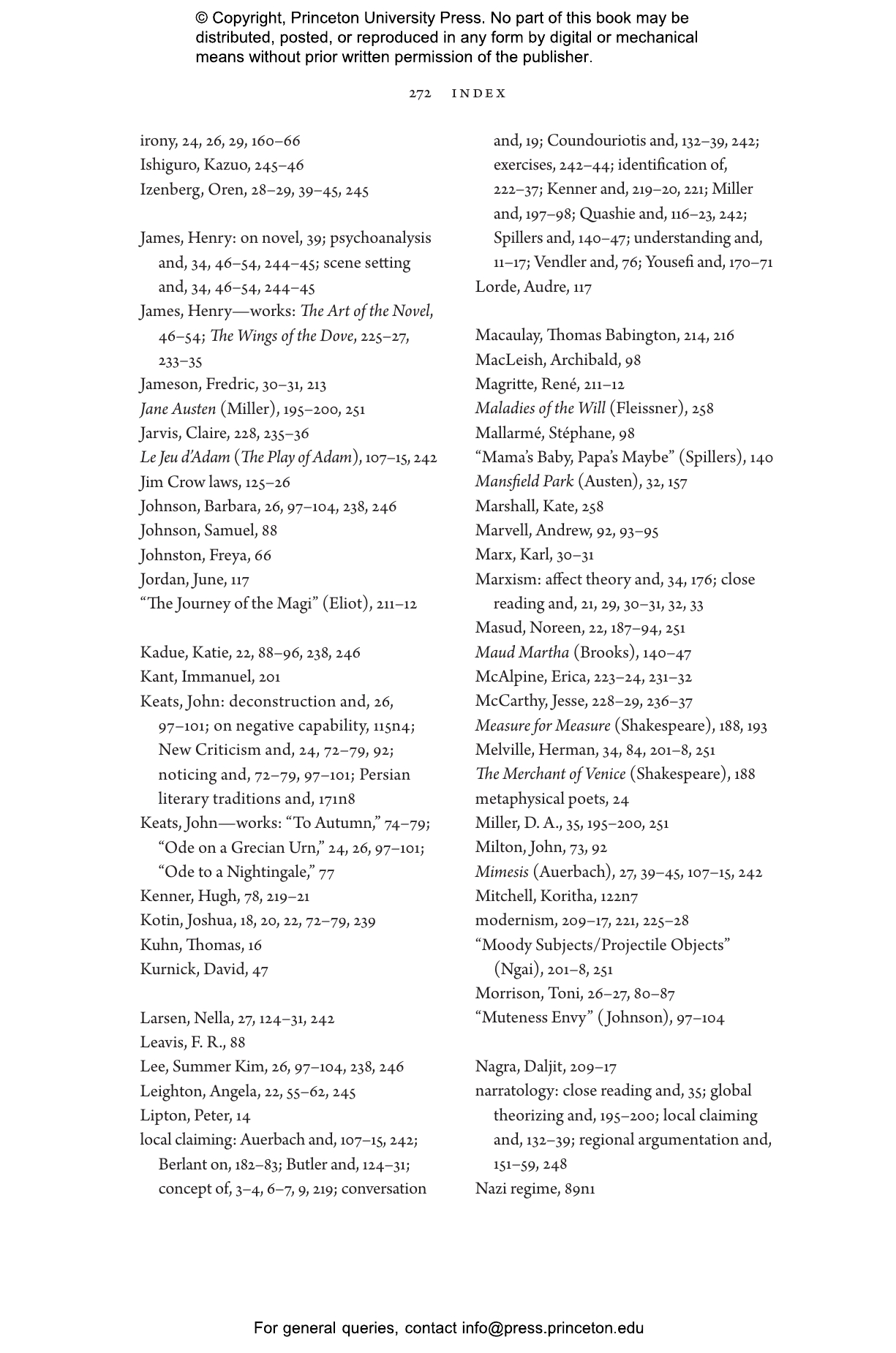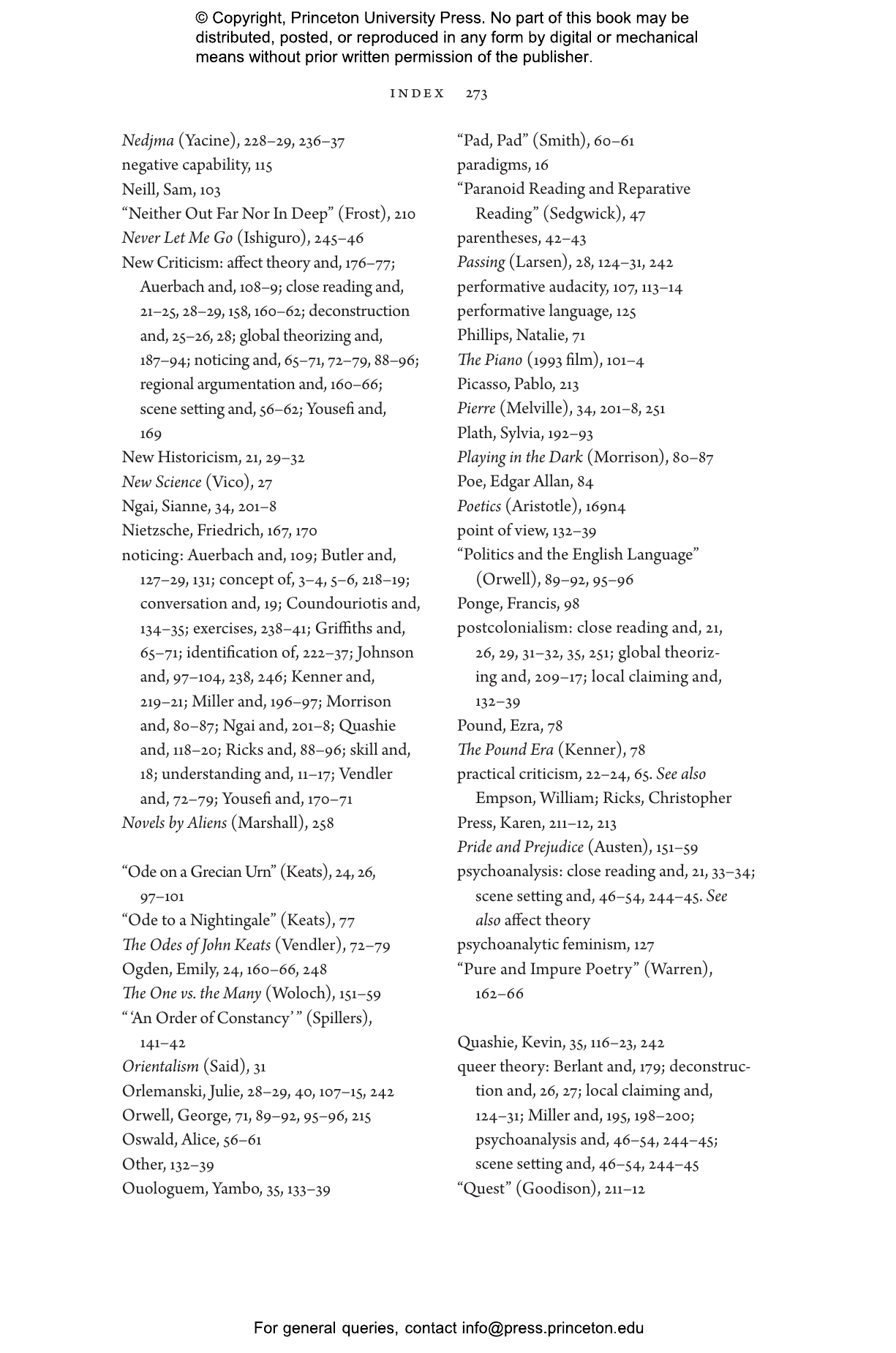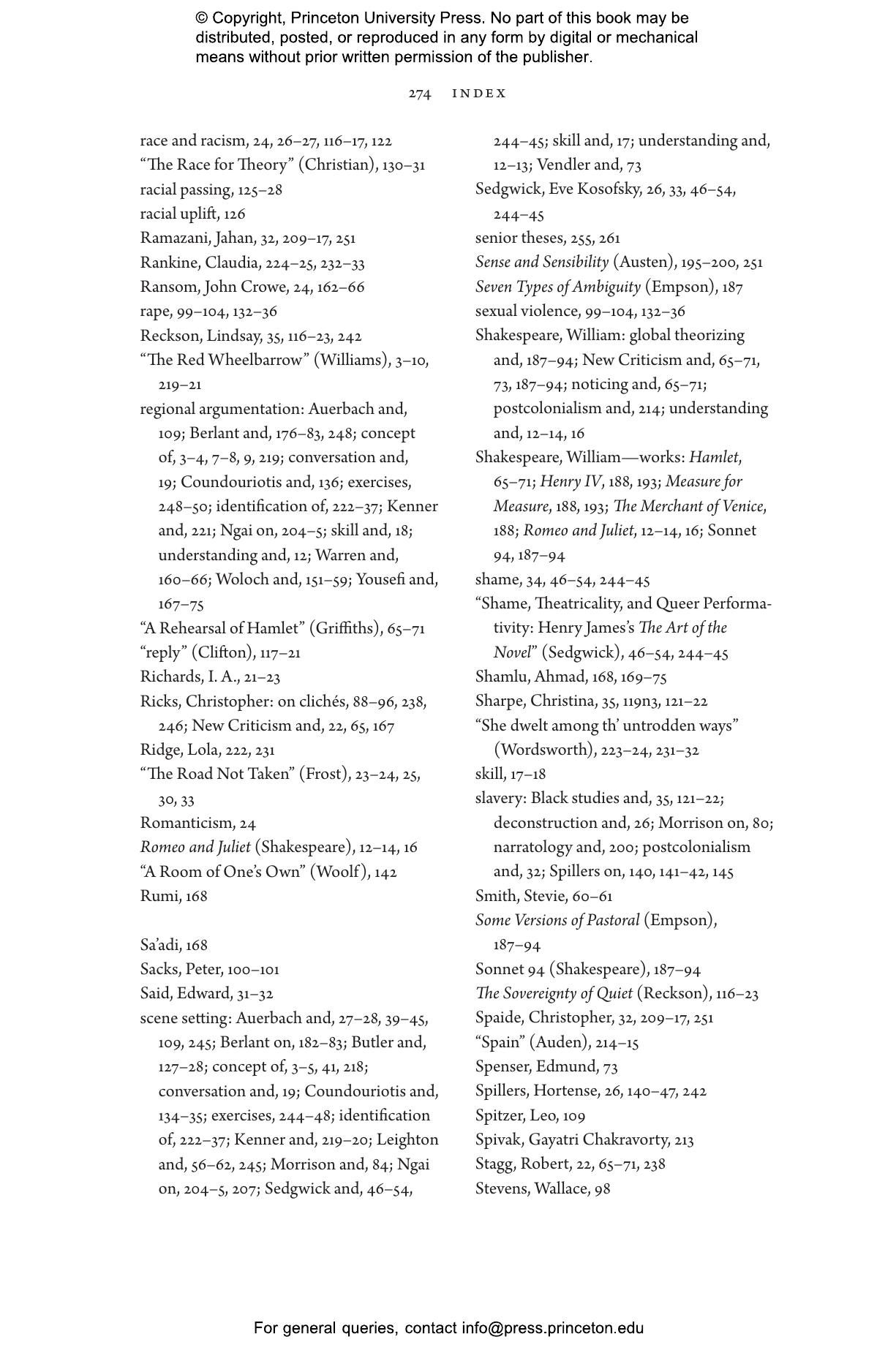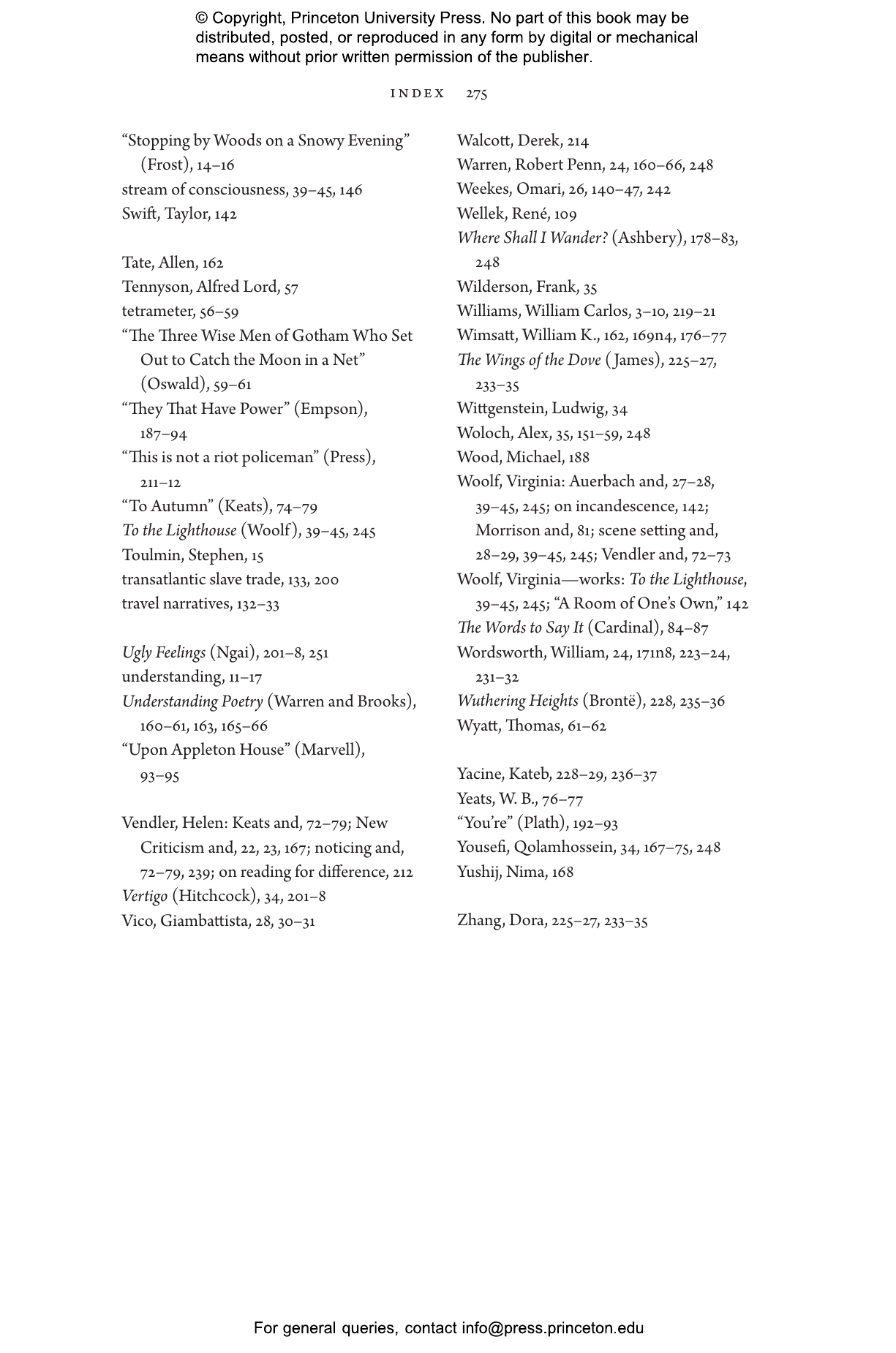Close reading—making an argument based in close attention to a text—is the foundation of literary studies. This book offers a guide to close reading, treating it as a skill that can be taught and practiced. It first explains what close reading is, what it does, and how it has been used across theoretical schools ranging from affect studies to Black studies to queer theory to Marxism. It then presents a series of master classes in the practice, with original contributions by scholars from a range of different institutions. Finally, it provides practical materials, worksheets, and suggested activities for instructors to use in the classroom. The tone throughout is encouraging and accessible, inviting readers of all backgrounds to hone their craft.
The book divides the practice of close reading into five steps, coining a term for each step: scene setting, noticing, local claiming, regional argumentation, and global theorizing. It traces the roots of close reading, showing how it has spread far beyond its origins in practical criticism and New Criticism. In twenty-one short chapters, contemporary scholars discuss close readings by such prominent literary critics as Erich Auerbach and Helen Vendler, describing how their arguments work and how to achieve similar results. An essential resource for instructors and students at the undergraduate level and beyond, this book shows how understanding close reading can make us better readers, thinkers, and writers.
Dan Sinykin is the Winship Distinguished Research Professor of English at Emory University and the author of Big Fiction: How Conglomeration Changed the Publishing Industry and American Literature. Johanna Winant is associate professor of English and humanities at Reed College and the author of Lyric Logic.
34028
“Who needs directions for how to pay attention? Really, we all do, especially—as this important and lucid collection makes clear—if we're approaching literary works and hoping to write about them well. In showing how to write about literary works with attention, these writers on writers on writing also offer a lovely, reliable tour through the history of literary criticism. A monument. A multi-tool. I'll keep it close to my own classroom—and to my heart.”—Stephanie Burt, author of Don't Read Poetry: A Book About How to Read Poems
“This excellent book argues that paying close attention to literature and how we write about it is crucial, important, imperative, ethically urgent, and seriously necessary, perhaps now more than ever, and that the principle of close reading cuts across theories, ideologies, identities, generations, and primary texts.”—Andrew DuBois, University of Toronto
“This book’s timely return to major works of literary criticism from the last century opens up new insights about the enduring value of literary study and brings clarity to a set of practices that literary critics tacitly know but rarely name. Winant and Sinykin teach us to both anatomize and compose close readings in an entirely new way. Undergraduates, graduate students, and instructors will find this book incredibly useful—we are already using it ourselves.”—Rachel Sagner Buurma, Swarthmore College, and Laura Heffernan, University of North Florida
“This tremendously affirming, thoughtfully conceived collection carries out its mission with precision, generosity, and flair. It promises to become an indispensable resource.”—David James, University of Birmingham
This publication has been produced to meet accepted Accessibility standards and contains various accessibility features including concise image descriptions, a table of contents, a page list to navigate to pages corresponding to the print source version, and elements such as headings for structured navigation. Appearance of the text and page layout can be modified according to the capabilities of the reading system.
Accessibility Features
-
WCAG v2.2
-
WCAG level AA
-
Table of contents navigation
-
Single logical reading order
-
Short alternative textual descriptions
-
Print-equivalent page numbering
-
Landmark navigation
-
Index navigation
-
Epub Accessibility Specification 1.1
-
ARIA roles provided
-
All non-decorative content supports reading without sight
-
No known hazards or warnings


